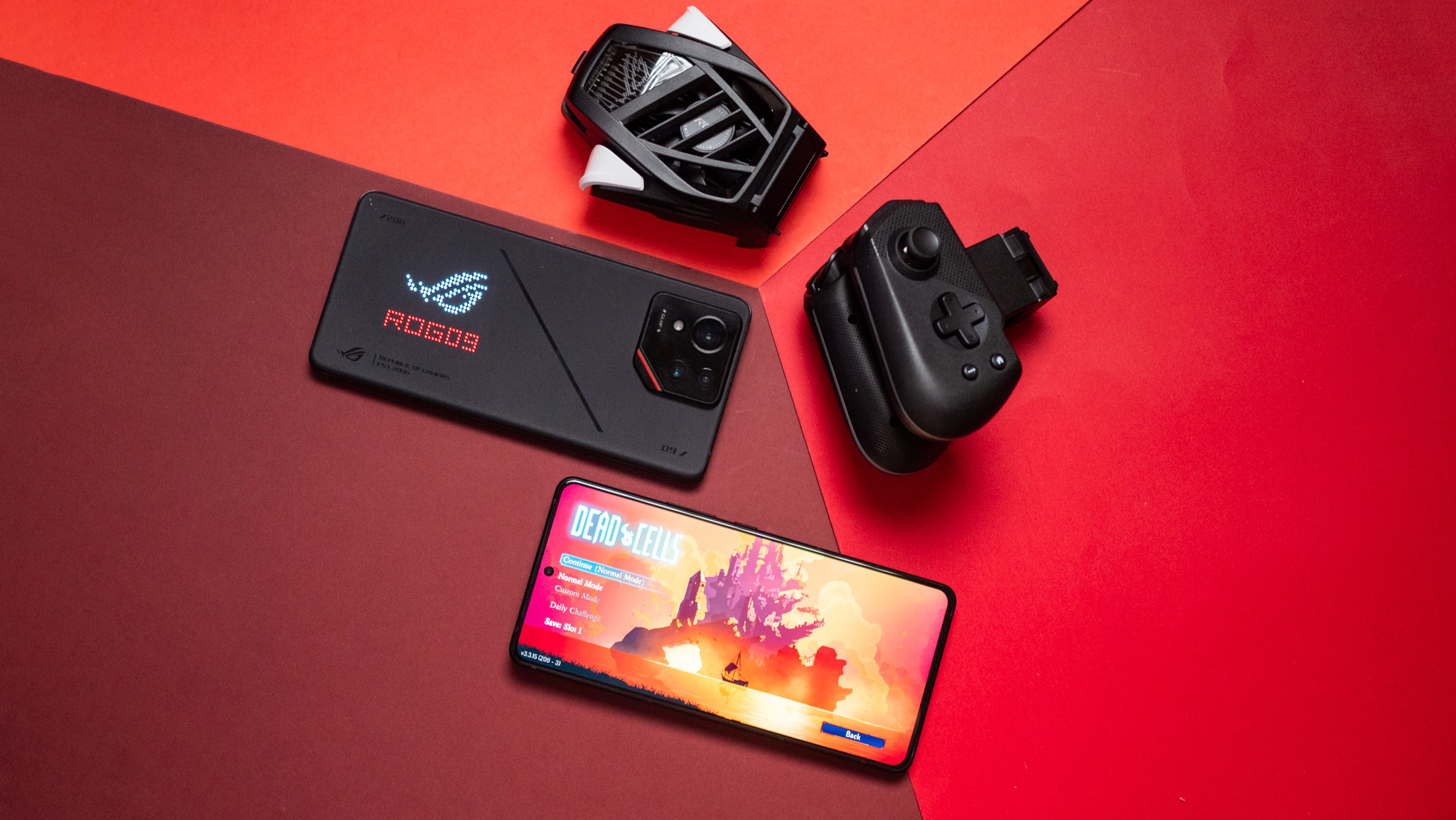
ASUS clearly knows how to make a great gaming phone, and the Taiwanese manufacturer has dominated this category in the last eight years. This year though, the brand changed up its strategy with the ROG Phone 8 Pro, overhauling the design to make the device look a little mainstream without too much overt styling.
That seems to have made a difference, with ASUS noting that the ROG Phone 8 saw a decent 15% increase in sales during the initial six months of availability versus the ROG Phone 7. Interestingly, the brand said that it was the Pro model that drove a bulk of the sales (66%), a threefold increase over the ROG Phone 7 Ultimate. Sure, these phones don't sell anywhere in the same volume as the Galaxy S24, but there is a growing demand for phones that deliver the absolute best performance, and ASUS is ideally positioned to take advantage.
With the ROG Phone 9, ASUS is continuing that momentum while delivering timely upgrades. The phone uses a similar foundation as its predecessor — the design is nearly identical — but you get Qualcomm's latest silicon, a new 50MP camera at the back that takes much better photos, and a bigger 5800mAh battery.
The rest of the features are the same, and that's a good thing; there wasn't a whole lot wrong with the ROG Phone 8 Pro to begin with. The result is that the ROG Phone 9 Pro is the best gaming phone you can buy today, but it goes beyond that — this is a great all-rounder if you want clean software and the best performance available today.
ASUS ROG Phone 9 Pro: Pricing and availability
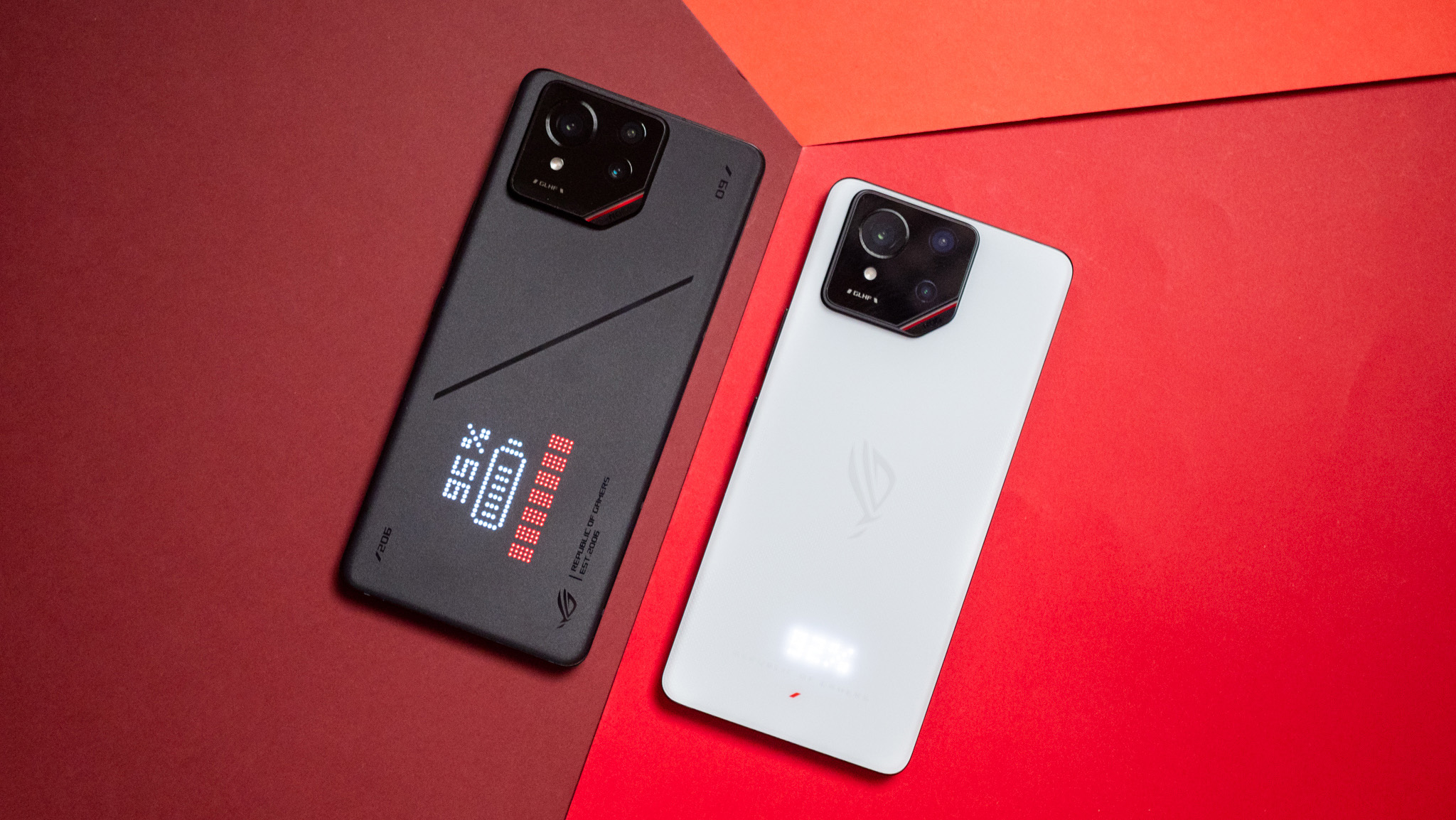
ASUS unveiled the ROG Phone 9 series on November 19, and the phones are now up for pre-order. There are two models in the series — the ROG Phone 9 Pro and the regular ROG Phone 9 — and the main difference is that the Pro model has a a 32MP 3x telephoto lens this time, and you get an Anime Vision panel at the back with higher LED density.
Both phones are available in various storage configurations, and the 16GB/512GB variant of the ROG Phone 9 Pro costs $1,199 in the U.S. and €1,299 in most European countries. There's a higher-end model dubbed the ROG Phone 9 Pro Edition, and this comes with 24GB of RAM and 1TB of storage, and you get more accessories bundled, including two phone cases and the AeroActive X Cooler Pro attachment. This variant costs $1,499/€1,499.
ASUS is rolling out a 12GB/512GB model in Europe, and it will cost €1,149. This configuration isn't launching in the U.S., and although ASUS didn't share any additional information, it should make its way to other global markets. The regular ROG Phone 9 is available with 12GB of RAM and 256GB of storage, and it costs $999 in the U.S. and €1,099 in most western markets.
As for availability, the ROG Phone 9 series is going on sale in Taiwan, Hong Kong, and mainland China starting November 20. The devices are up for pre-order in the U.K. and other European markets, with deliveries starting in December. Both phones will be available in the U.S. in January 2025, and will make their way to other global markets sometime in Q1 2025.
ASUS ROG Phone 9 Pro: Design
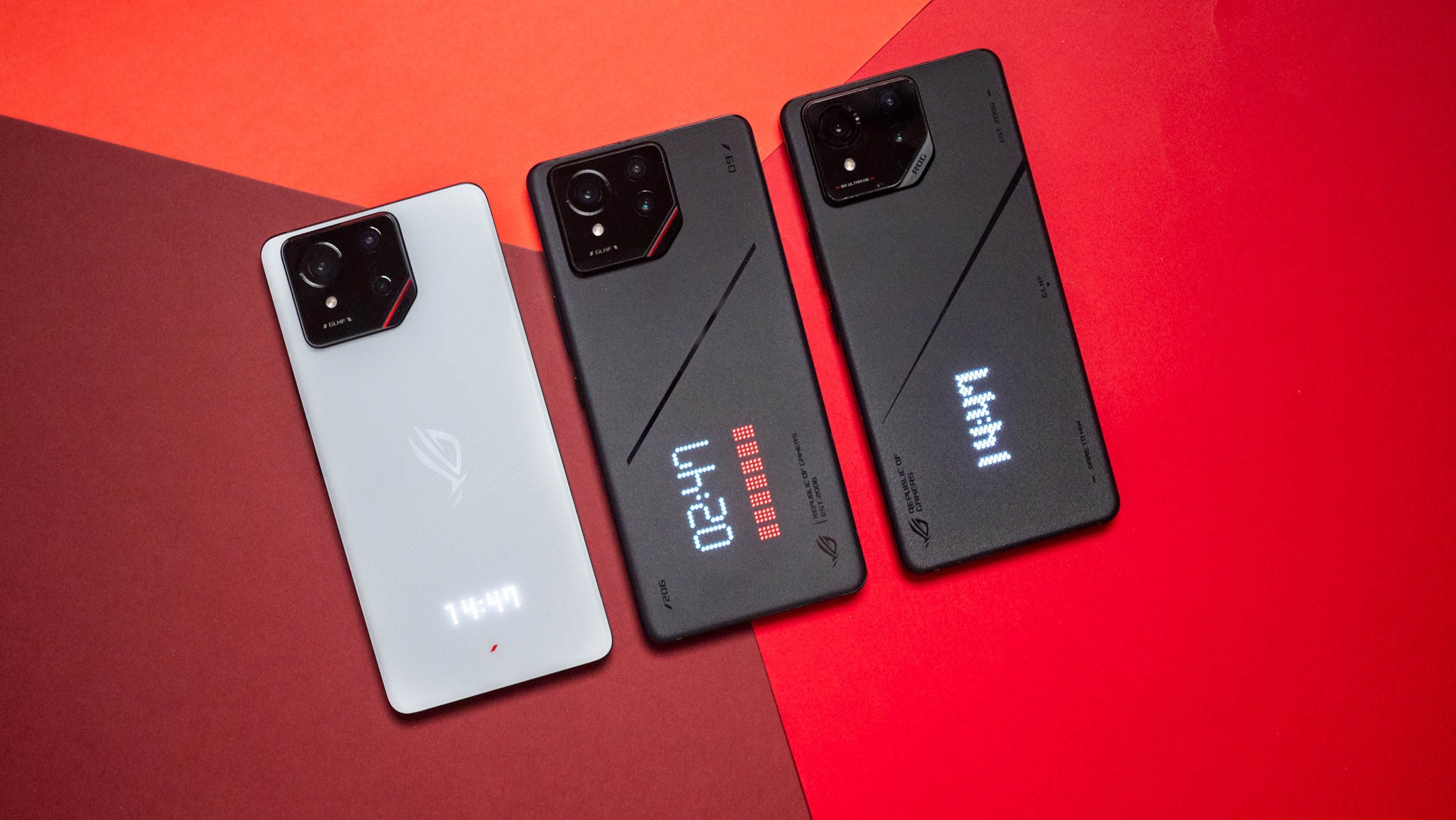
- The design isn't as flamboyant as previous iterations.
- You still get a good in-hand feel and ideal weight distribution.
- The secondary Anime Vision panel at the back is just plain cool.
ASUS didn't change the design to a noticeable degree with the ROG Phone 9, with the device continuing with the same overall aesthetic as the Phone 8 Pro. That means you get a giant slab of a phone with a glass back and a silky crystalized nano-texture, and a few etched lines that highlight the device's gaming roots.
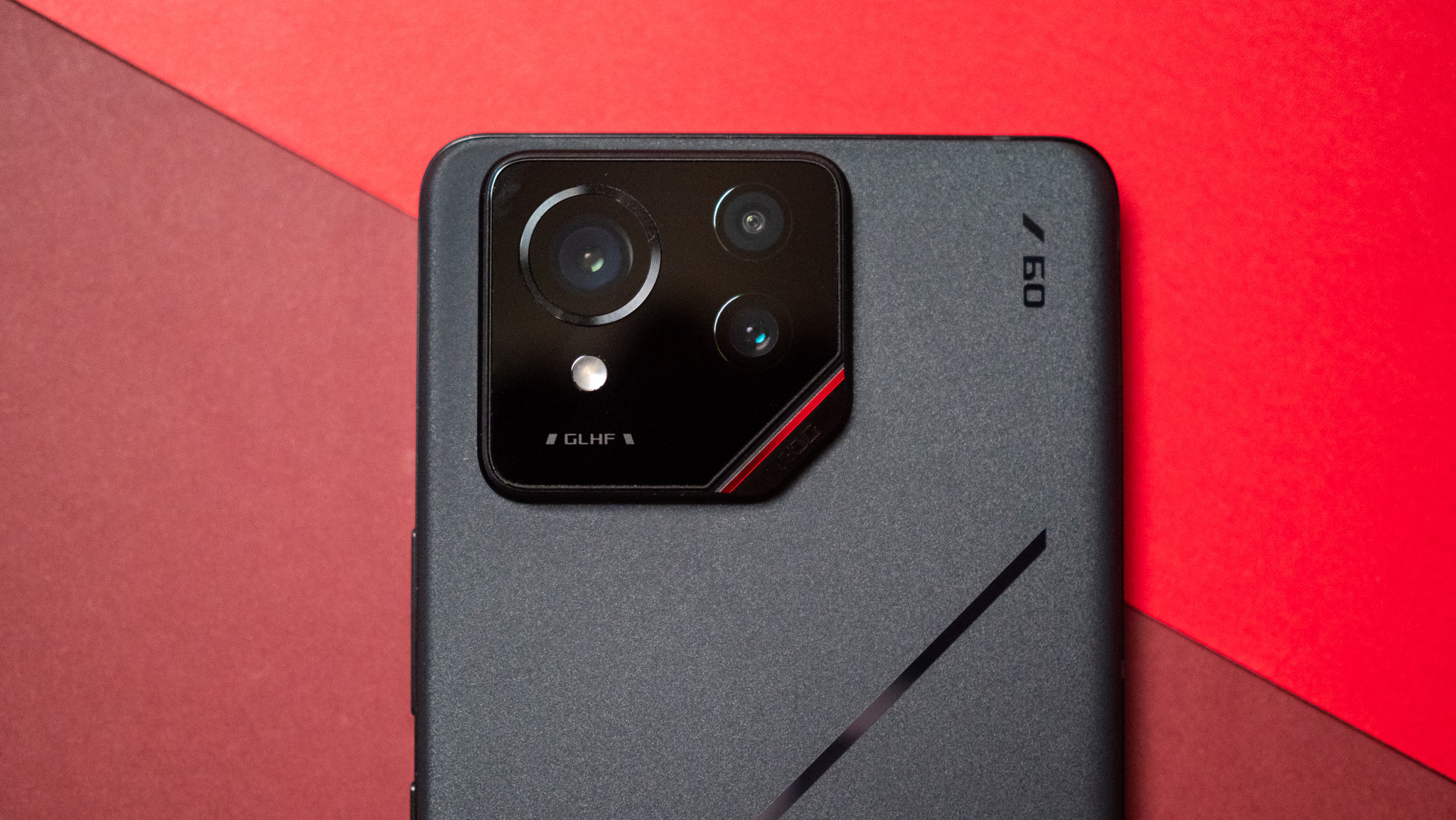
The camera island is identical as well, but there's now a distinctive red line that runs just beneath it, giving the device a little visual flair. The ROG Phone 9 Pro has flat sides with beveled edges that make it comfortable to hold and use, and as always, ASUS nailed the weight distribution. While the ROG Phone 9 Pro is big and bulky — it weighs 227g — you don't feel the heft that much. The regular ROG Phone 9 comes in Storm White and Phantom Black variants, but the Pro model is limited to the black version.
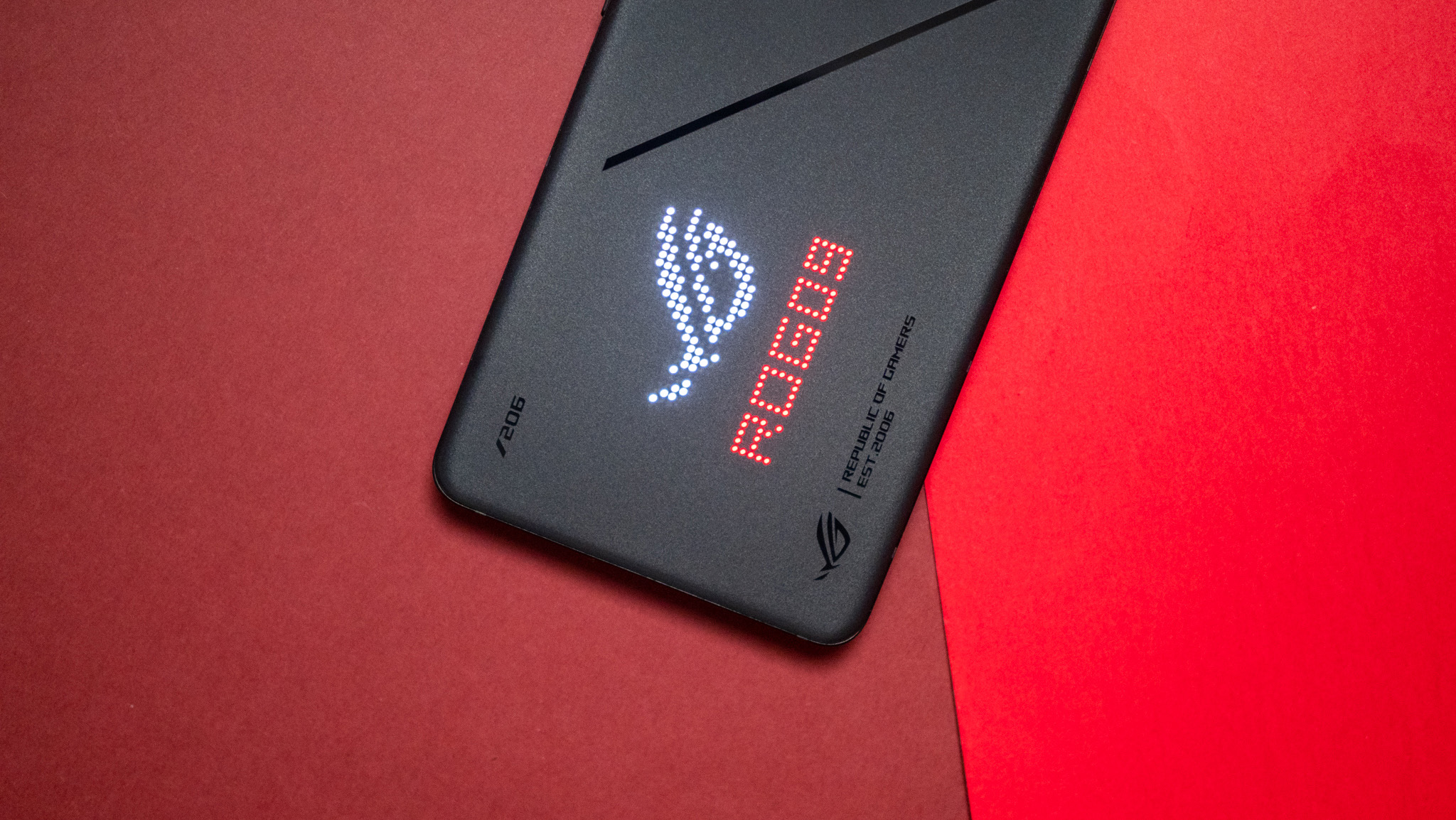
While ASUS toned down the design flair, there are a few things that differentiate the ROG Phone 9 Pro from regular phones. The obvious feature is Anime Vision, a secondary panel at the back that's made up of LEDs. This time, ASUS added a second panel at the back of the regular model as well, albeit with 85 LEDs versus 648 LEDs on the Pro model. The panel is unquestionably cool, and it comes with white and red LEDs on the Pro variant.
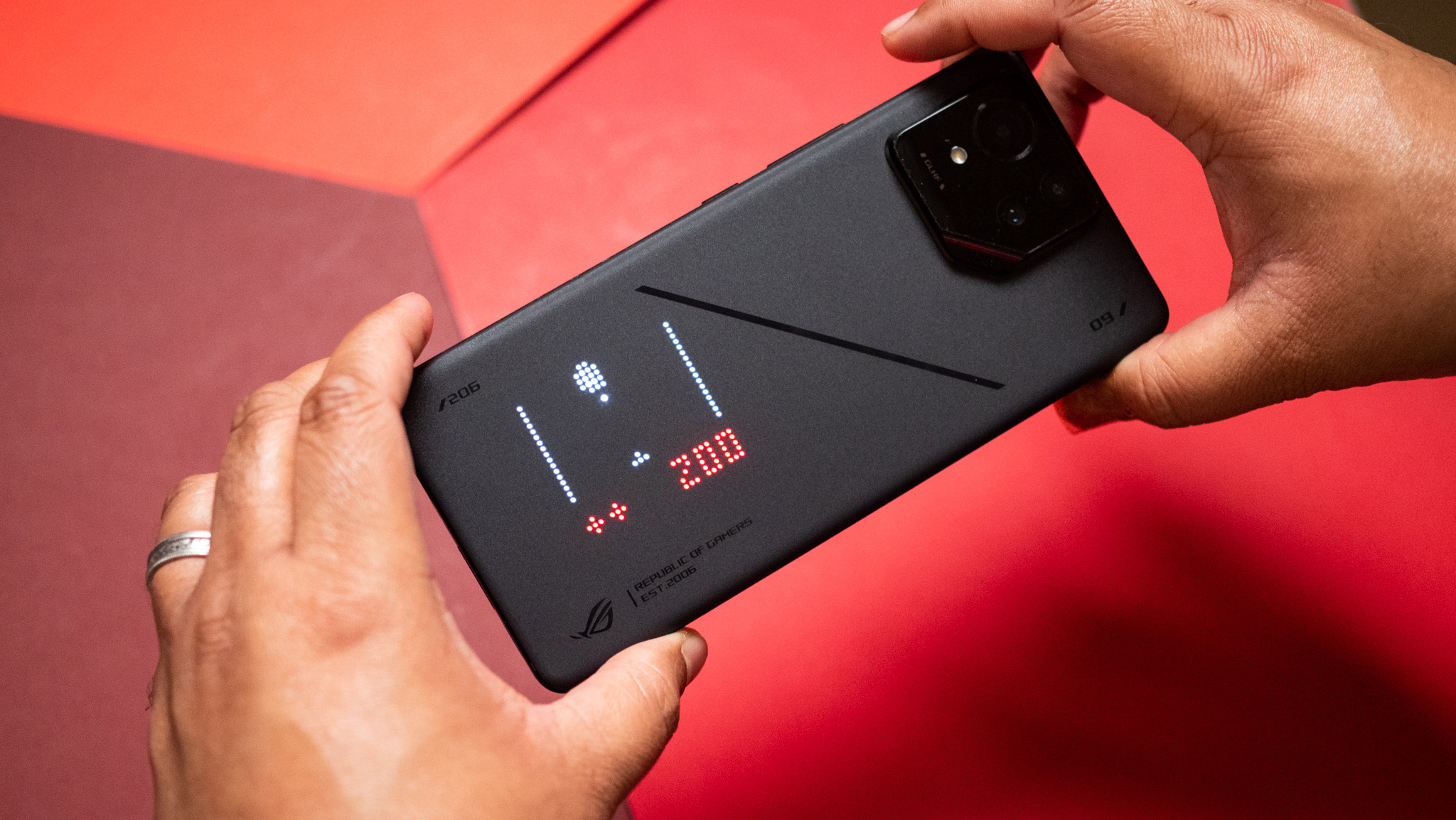
What I like the best is that you can actually play games on the back panel, with ASUS recreating facsimiles of classic titles. You use the ultrasonic AirTriggers to control the action, and if you grew up playing these kinds of games (like I did), it's plenty of fun — I'll admit that I wasted entirely too much time playing the four bundled games. Because of the limited nature of the LEDs on the standard model, this Anime Play feature is limited to the ROG Phone 9 Pro.
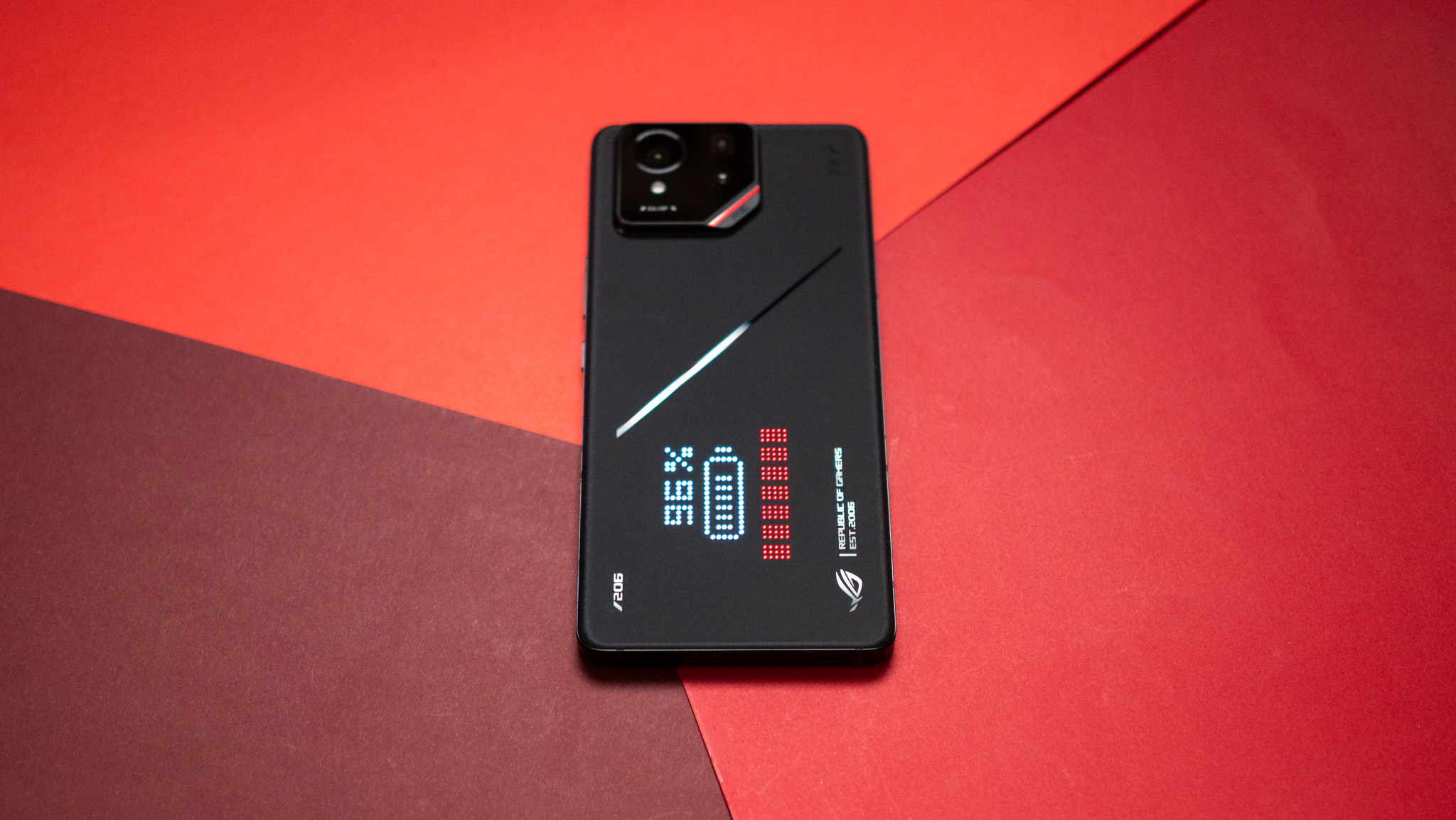
Like previous years, the screen at the back is extensively customizable, and you can add your own text, images, and just about anything at the back. There's also an ROG Together option that unlocks additional visuals when two ROG Phone 9 units come into contact, and it's pretty cool.
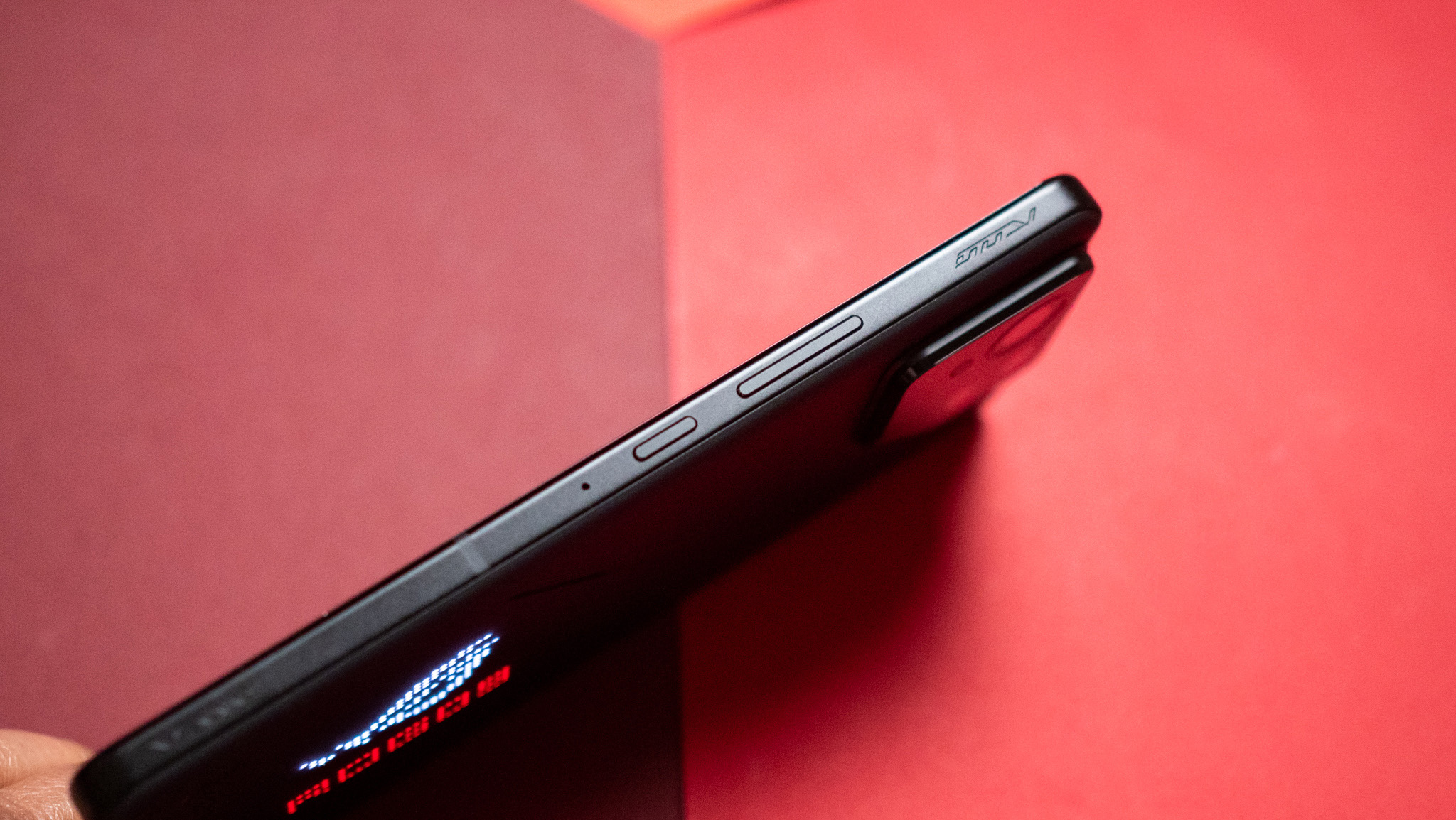
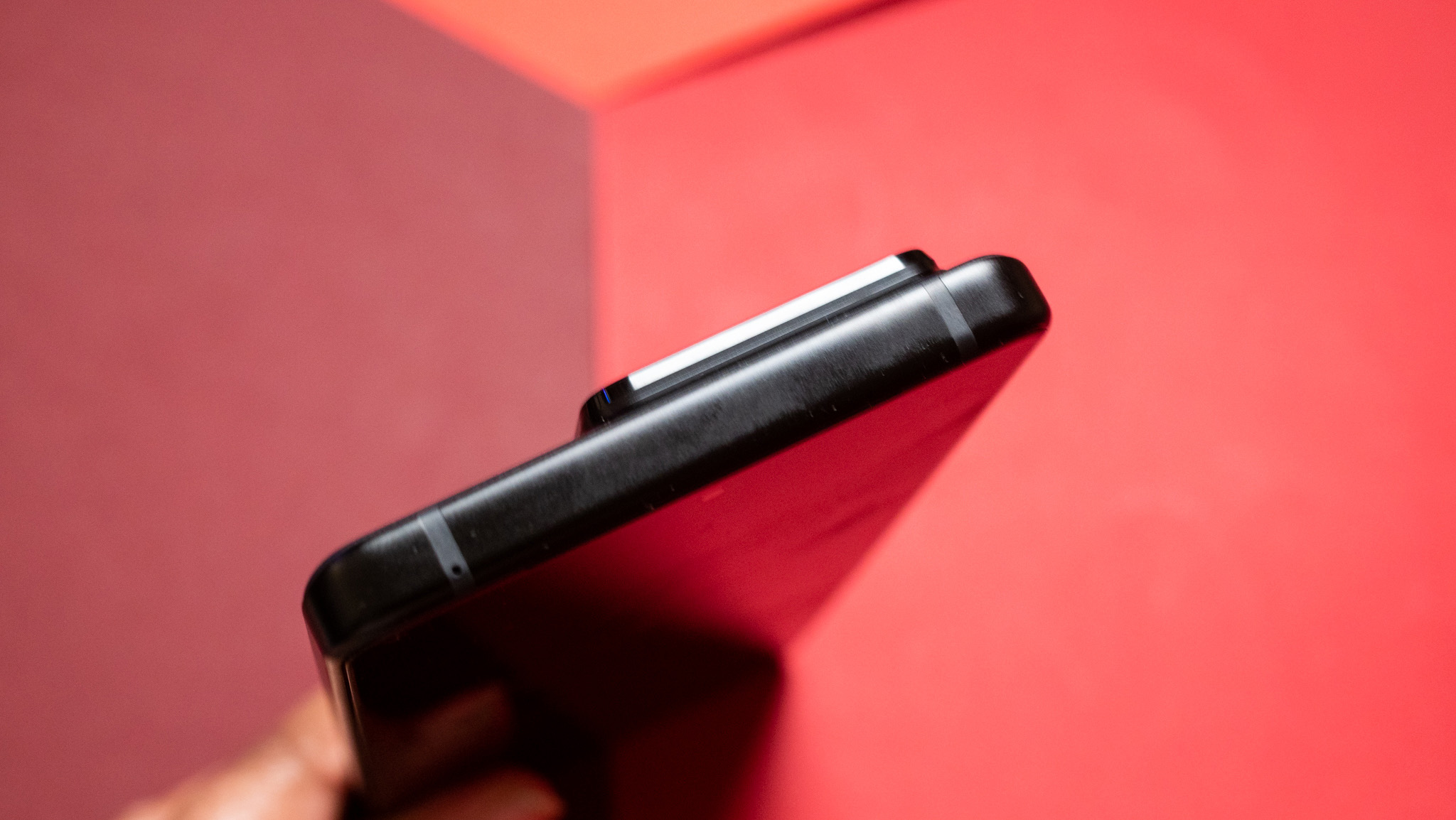
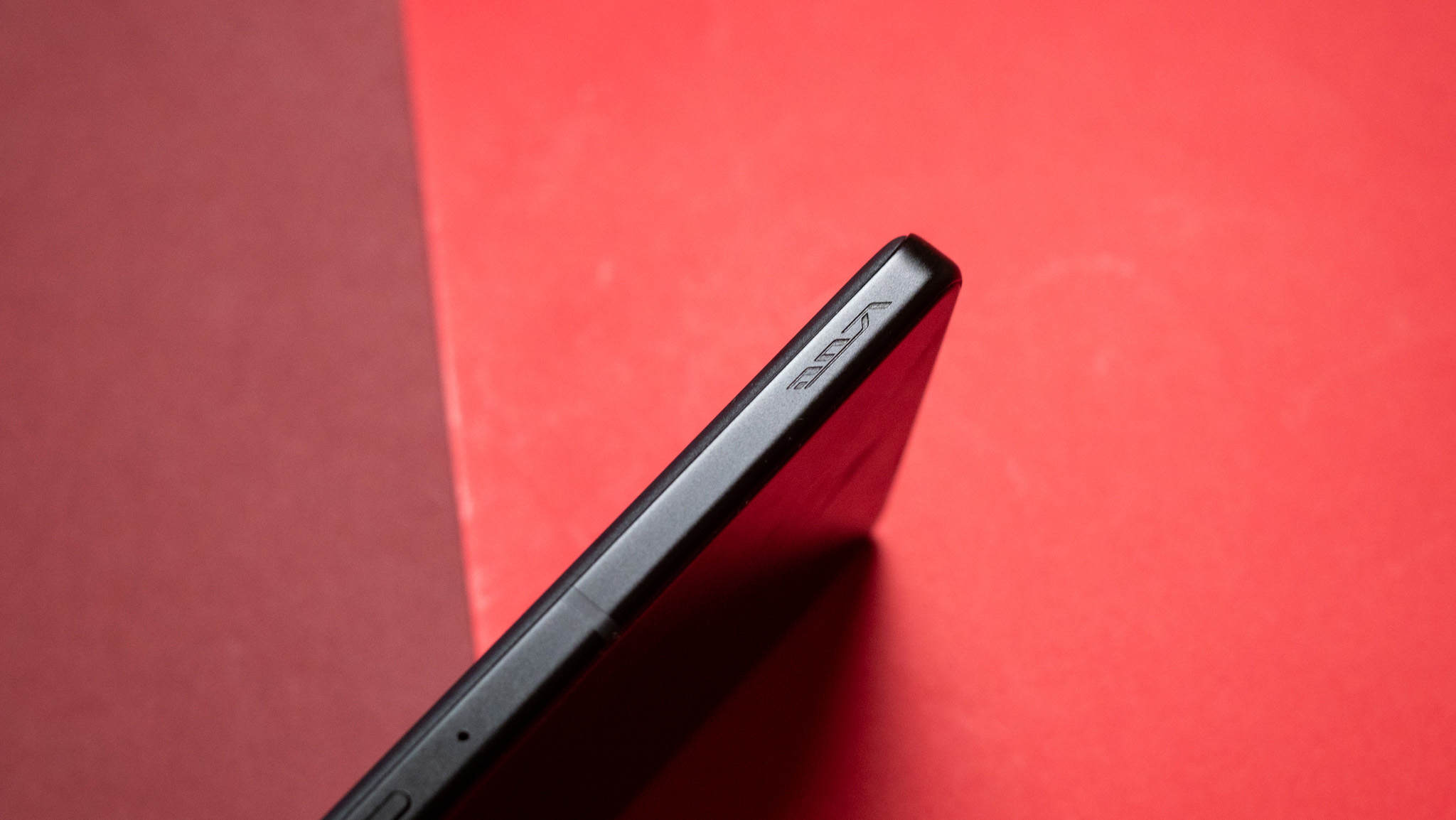
There are other niceties; the ultrasonic AirTriggers continue to be great, and while they're useful during gaming, it's the customizability in day-to-day tasks that makes the feature stand out in my own usage. You can use short and long squeezes gestures with the AirTriggers to launch Gemini, toggle the flashlight, enable DND, launch the camera, and so much more.
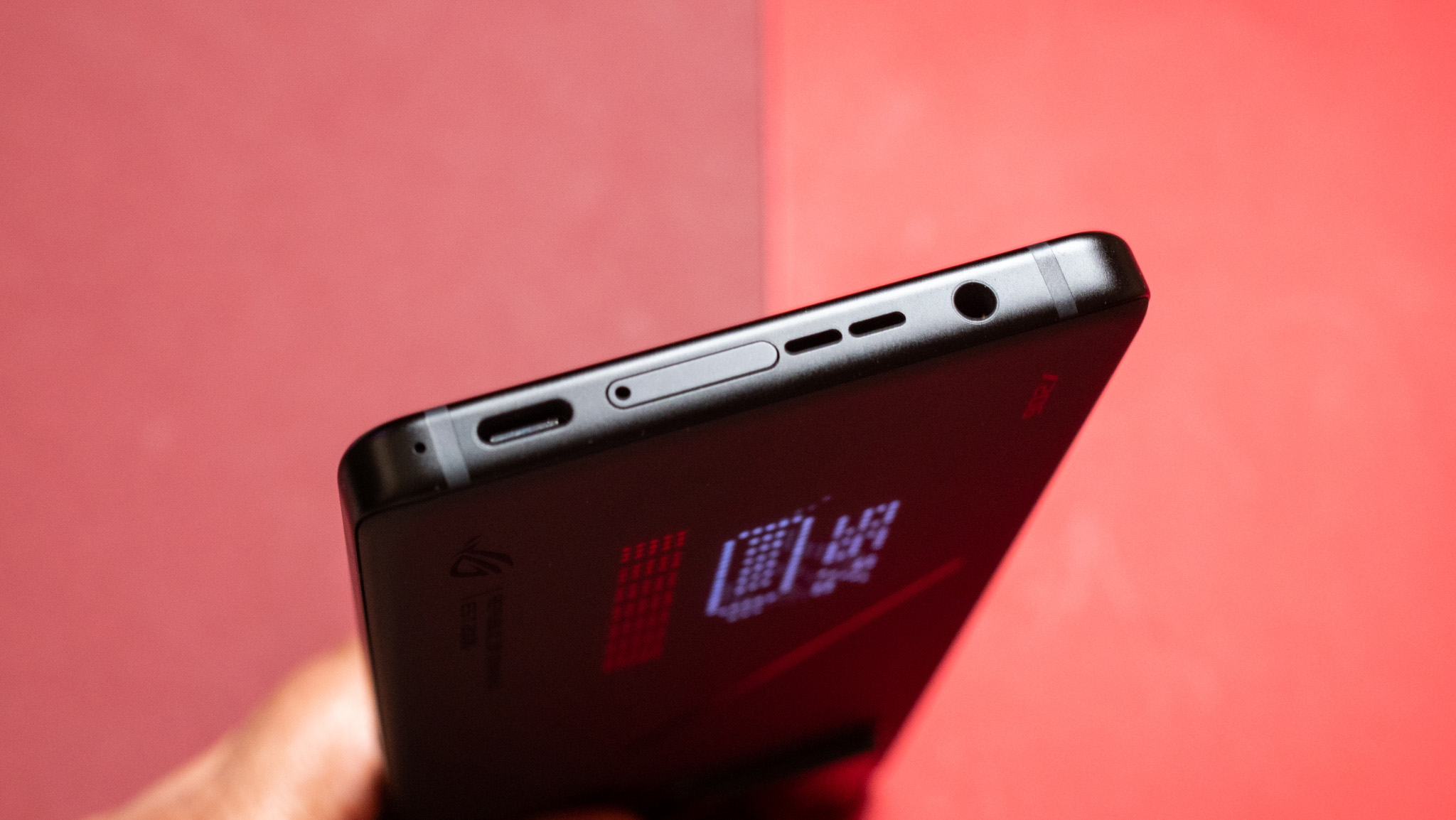
The rest of the design is pretty standard; you get the power and volume buttons on the right, and they have good tactility. The USB-C port is at the bottom, and like previous years, it sits to the left, with the SIM card tray located in the middle. The 3.5mm jack is thankfully intact, and the onboard sound continues to be excellent. ASUS notes that eSIM is only available in Taiwan and Japan, and while the feature will come to other countries, that will only be with the next model.
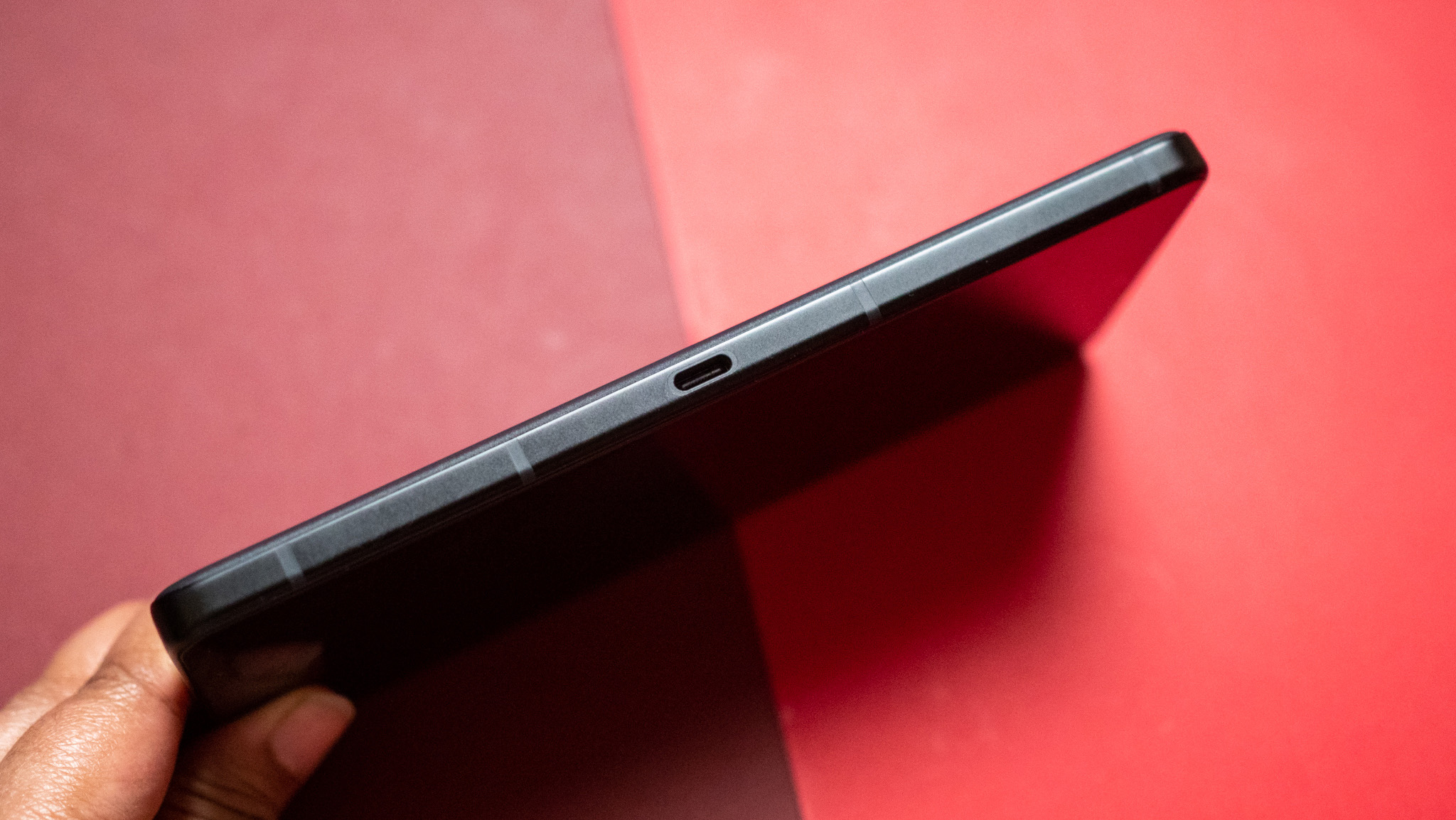
Notably, the side-mounted USB-C port is retained, and this is how the brand's AeroActive cooling solution connects to the device. You get IP68 dust and water resistance as well; you don't usually get ingress protection with gaming phones, so it's good to see ASUS offer this.
ASUS ROG Phone 9 Pro: Screen
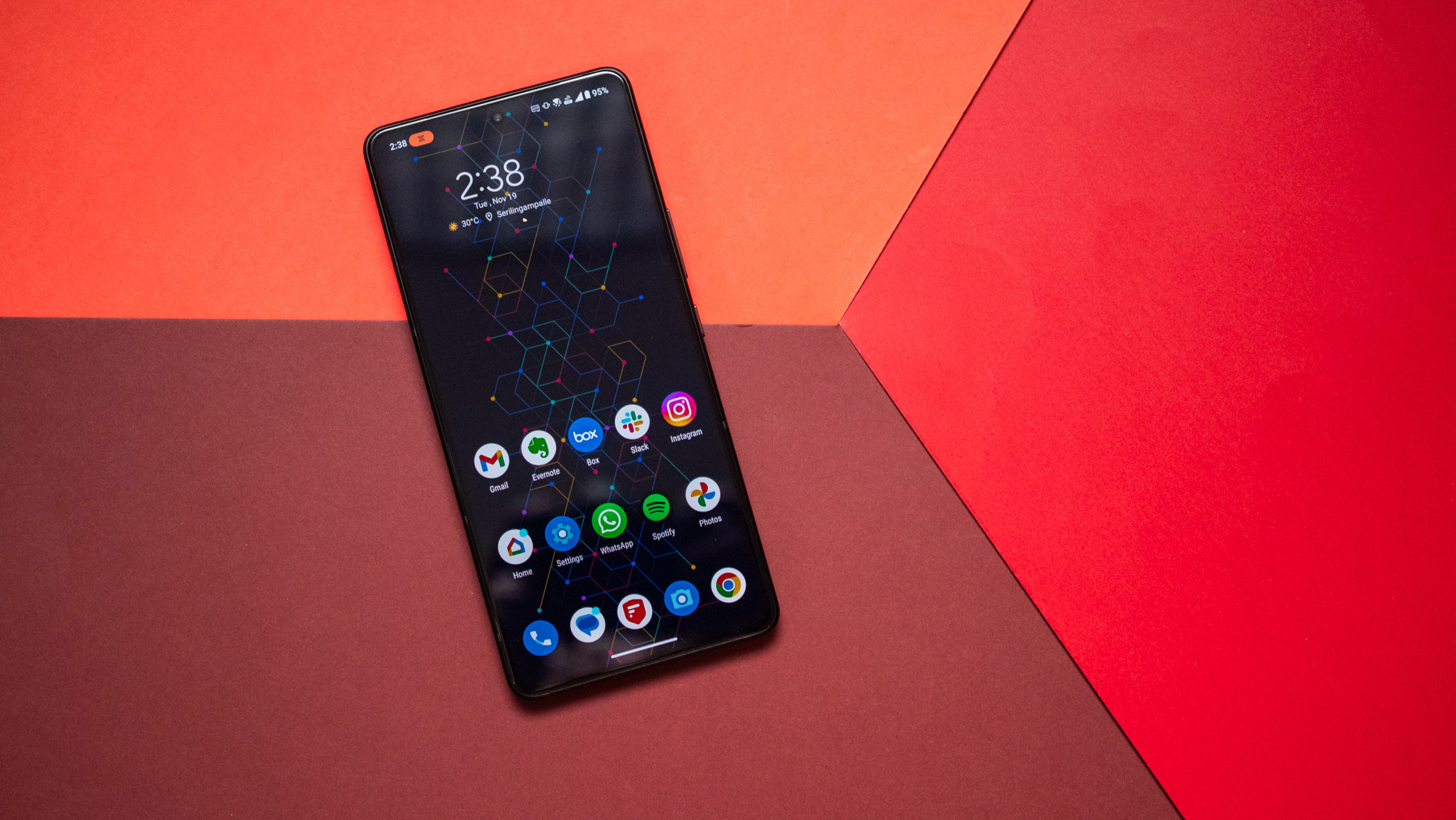
- With 165Hz, there's a clear difference against other Android phones.
- The AMOLED panel gets bright, and is great for multimedia as well as gaming.
ASUS is sticking to the same 6.78-inch Samsung AMOLED panel that debuted on the ROG Phone 8, and it goes up to 2500 nits maximum and 1600 nits in HBM mode. You get Gorilla Glass Victus 2 protection as standard.
Similar to the best Android phones, the panel gets LTPO tech to dynamically adjust the refresh according to on-screen content, and it makes a noticeable difference. What gives the device a distinct edge is that it has 165Hz refresh rate instead of the usual 120Hz on most devices, and the result is that the ROG Phone 9 Pro feels unmistakably fluid even next to the likes of the Vivo X100 Ultra and Pixel 9 Pro XL.
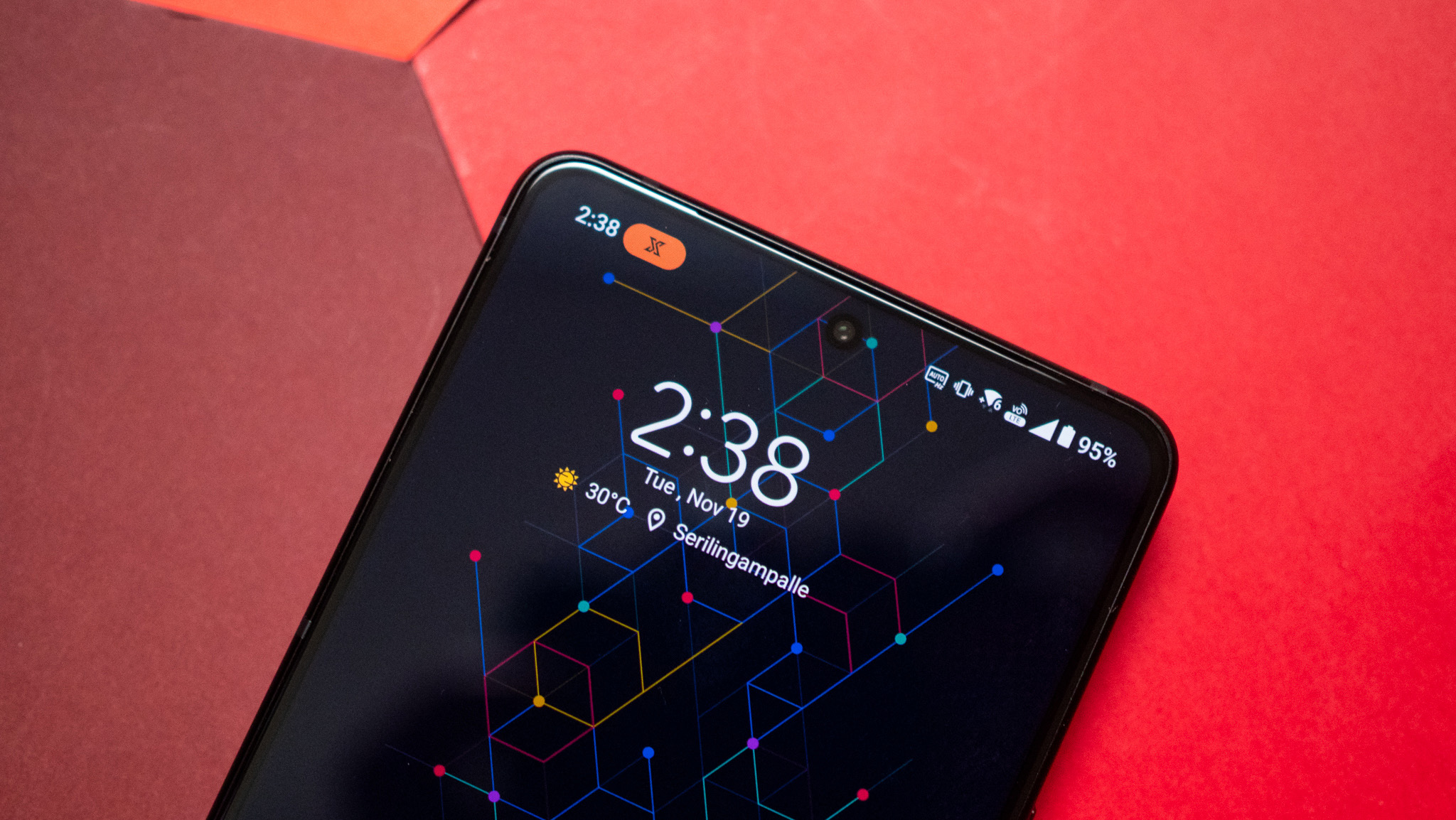
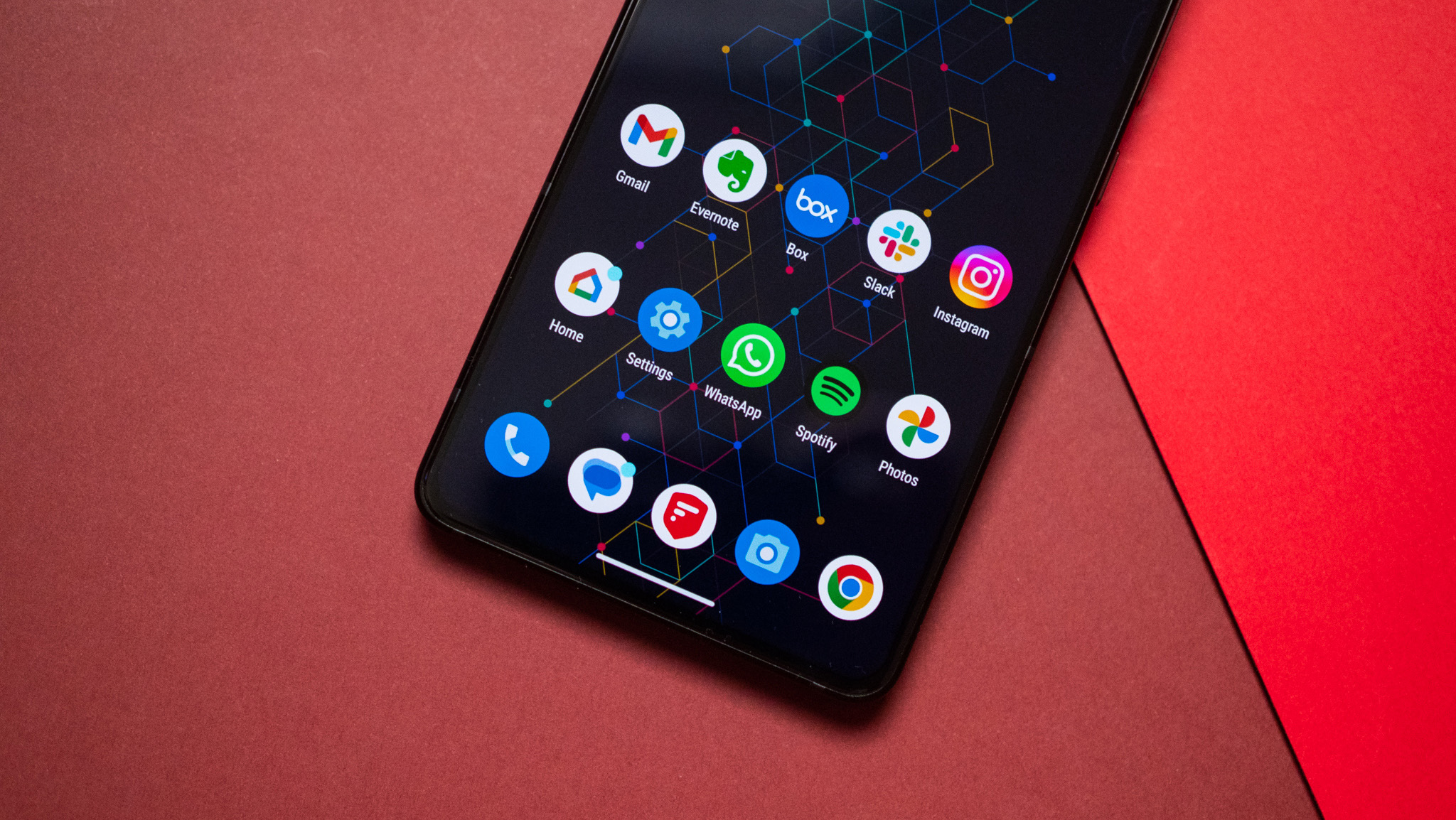
When it comes to onboard audio, you get what is arguably one of the best packages available today. The ROG Phone 9 Pro retains the 3.5mm jack, and the internal DAC is decent enough that you don't need a standalone unit if you want to use IEMs with the phone. There's also AptX Lossless and the entire suite of Qualcomm's codecs, and the onboard sound is once again tuned by Dirac, and it is noticeably better than most devices.
As you'd imagine, picture quality is terrific, and the phone comes alive during gaming. Colors are vibrant and saturated, and you get a decent eye protection mode that shifts to warmer hues at night. There's a 185Hz mode as well, but that's limited to games, and can be unlocked within Game Genie.
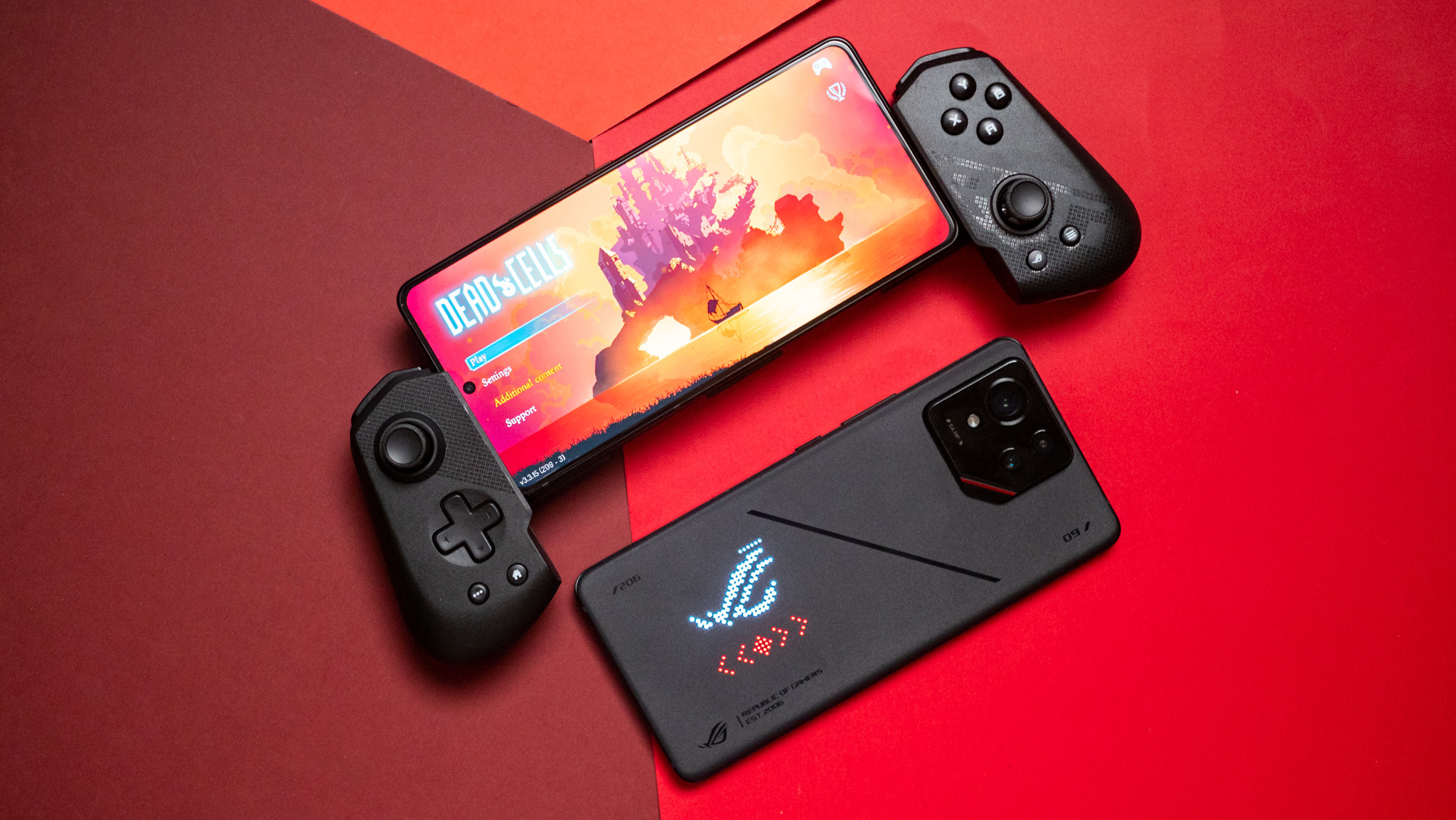
I had no issues playing games or streaming content on the ROG Phone 9 Pro; the phone handled HDR content well, and there were no issues with brightness levels even under harsh sunlight. While the panel itself hasn't changed, it still has a lot going for it, and it absolutely delivers at gaming.
ASUS ROG Phone 9 Pro: Performance
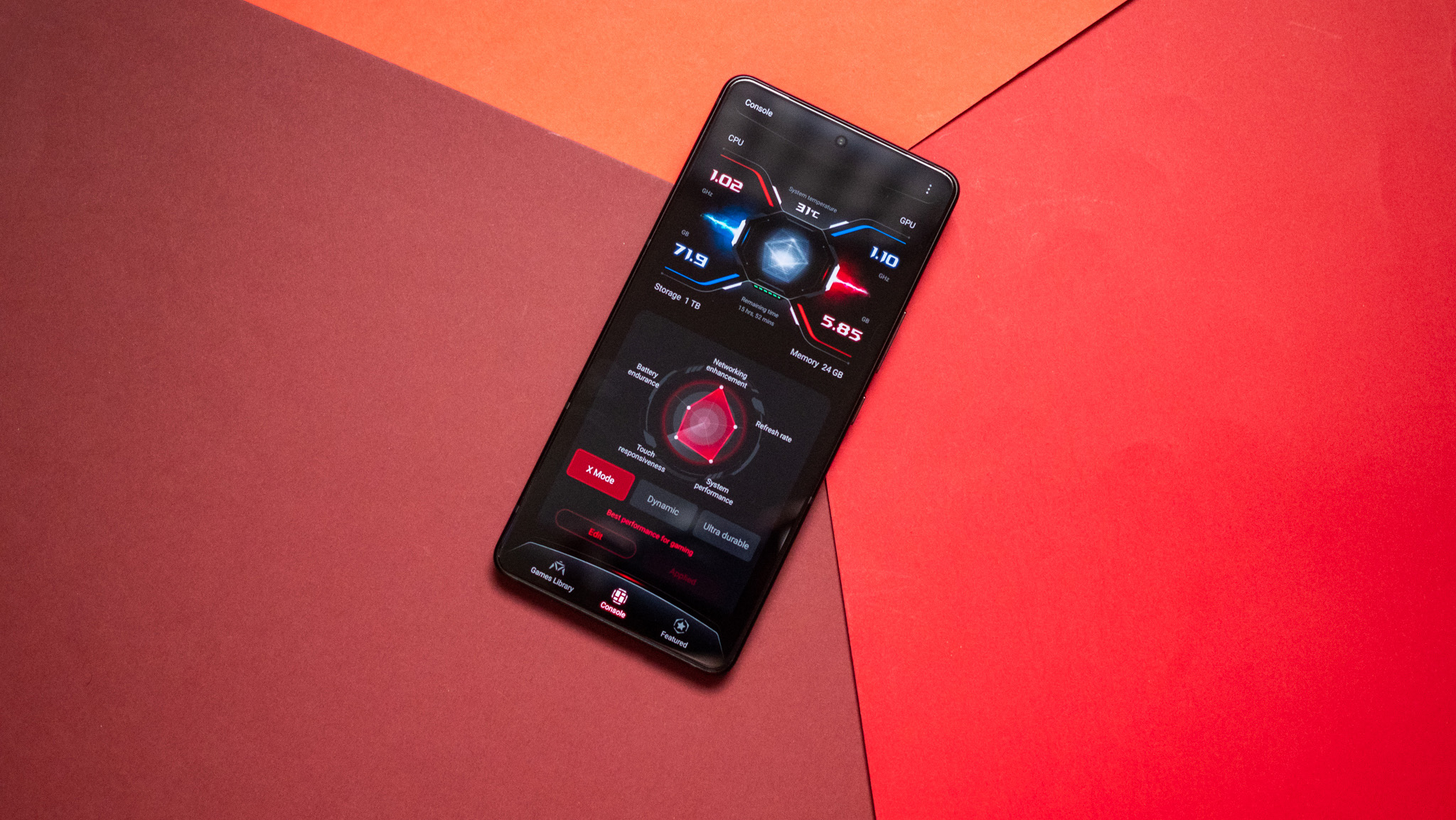
- This is one of the fastest phones of 2025.
- ASUS has extensive customizability with Armoury Crate.
- There's no throttling, but the device gets hot with extended gaming.
I get to use a lot of phones over the course of a year, and while most phones share the same Qualcomm hardware these days, no manufacturer does as good a job optimizing the hardware as ASUS. Both models in the ROG Phone 9 series feature Qualcomm's Snapdragon 8 Elite, and it is a powerhouse that's on a whole new level.
Clearly, Qualcomm made a lot of tweaks with this generation, and even though the Snapdragon 8 Gen 3 is plenty fast in its own right, you get huge gains on the Elite. Obviously, the difference is more noticeable when running synthetic workloads, with both the ROG Phone 9 Pro and the standard model posting the highest scores out of any phone I tested.
Category |
ASUS ROG Phone 9 |
ASUS ROG Phone 9 Pro |
ASUS ROG Phone 8 Pro |
|---|---|---|---|
PCMark Work 3.0 (Overall) |
25711 |
25733 |
22434 |
PCMark Work 3.0 (Web Browsing) |
24963 |
25064 |
29568 |
PCMark Work 3.0 (Video Editing) |
9333 |
9311 |
9214 |
PCMark Work 3.0 (Writing) |
33762 |
34828 |
26223 |
PCMark Work 3.0 (Photo Editing) |
57850 |
56377 |
48464 |
Geekbench 6 (single-core) |
3144 |
3137 |
2240 |
Geekbench 6 (multi-core) |
9783 |
9936 |
6960 |
Geekbench AI (Quantized Score) |
5371 |
5479 |
4304 |
3DMark Wild Life Extreme (score) |
5942 |
5935 |
5207 |
3DMark Wild Life Extreme (FPS) |
35.58 |
35.54 |
31.17 |
3DMark Solar Bay (score) |
10036 |
10038 |
8655 |
3DMark Solar Bay (FPS) |
38.16 |
38.17 |
32.91 |
There's absolutely no lag or stutter in the two weeks I used either device, and if anything, the interface is the most fluid — ASUS knows what it's doing in this regard. What's interesting is that ASUS once again has a higher thermal threshold than other brands, and as a result, the ROG Phone 9 Pro went up to a scorching 52 degrees Celsius during 3DMark's Steel Nomad Light stress test with X Mode enabled. The standard model got even hotter at 53 degrees, and at that point, both devices were so hot that it wasn't possible to touch the mid-frame, much less use the phones in-hand.
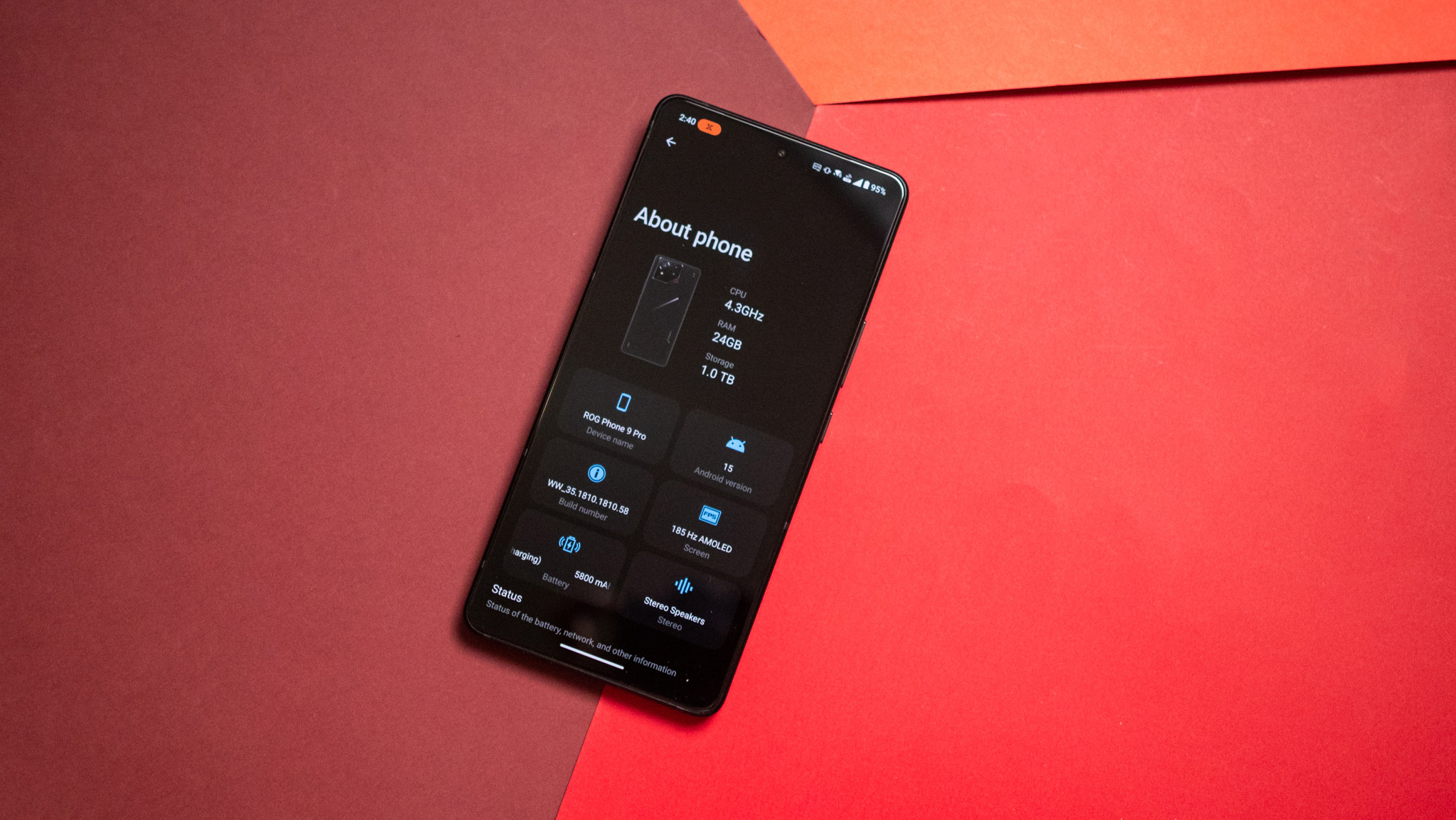
The side effect of unrestricted thermals is that the ROG Phone 9 Pro has a nearly-flawless 99.2% score in the demanding 3DMark stress test, but again, you're not able to hold the device, so the scores are just for bragging rights. Also, this isn't anything new — earlier ASUS gaming devices also got just as hot.
Thankfully, this isn't as big an issue in day-to-day gaming sessions; while the device still gets hot — more so than other high-end phones — it doesn't get to a point where it's unbearable to hold, and if you switch to the Dynamic mode, you get much better thermal efficiency.
What all of this means is that in real-world use, the ROG Phone 9 Pro is the best device if you care about mobile gaming. I got much better framerates in demanding titles even with extended gaming sessions, and there was no lag whatsoever. ASUS deserves credit for allowing 120fps gaming across a multitude of titles — much more so than any other brand.
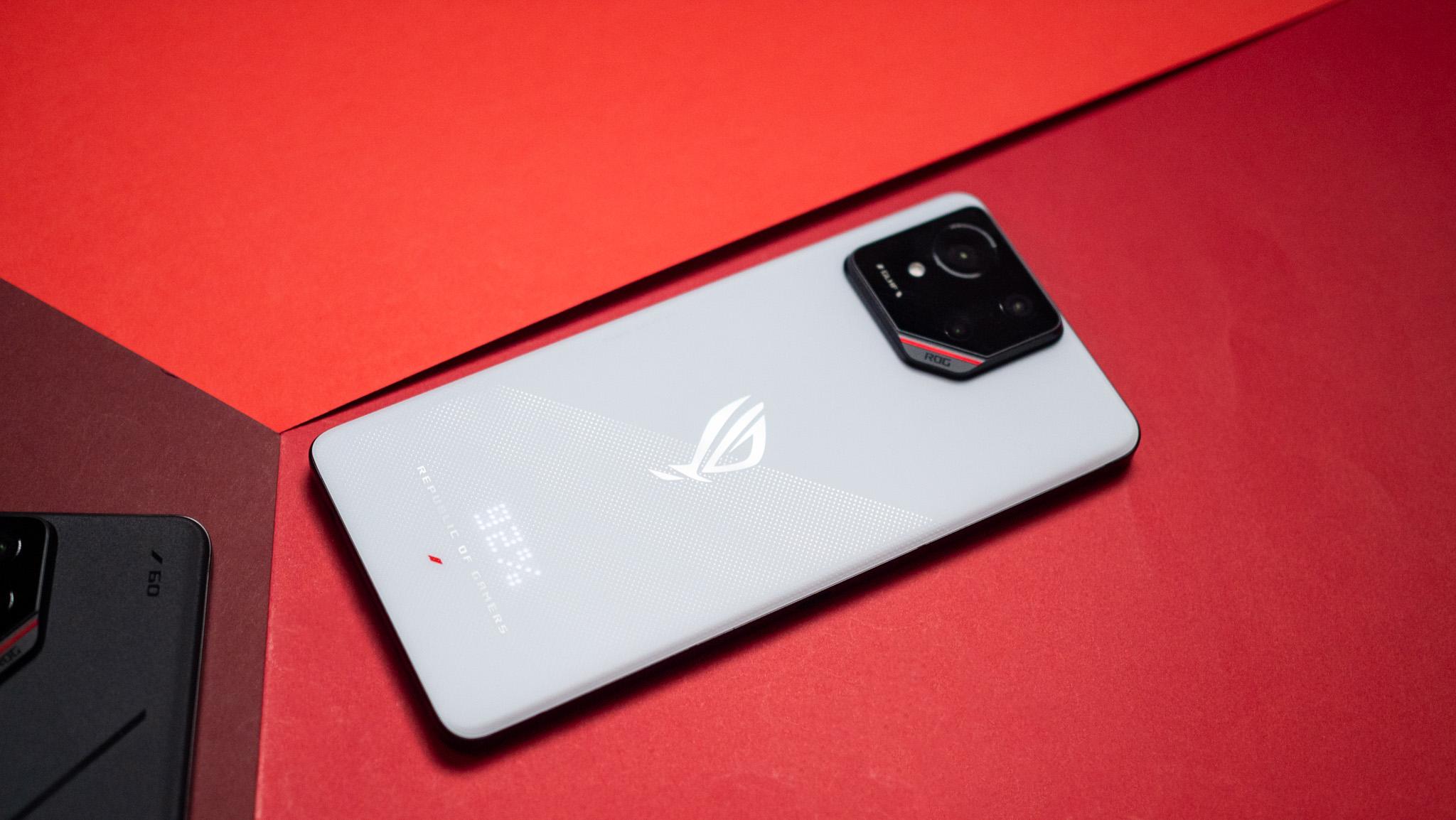
While the ultrasonic AirTriggers aren't new, they provide an additional dimension of immersion in most games, and they're easy to set up and use. You get LPDDR5X RAM and UFS 4.0 storage on both devices, with the standard model going up to 16GB/512GB and the Pro model hitting 24GB/1TB — this is the variant I'm using.
One of the reasons I like using ASUS devices is that the manufacturer uses the full suite of features that Qualcomm has to offer — this isn't the case with most brands. As such, you get great connectivity, and all the AptX codecs. I didn't see any issues whatsoever with connectivity or while making calls, and the device excels at the basics. The vibration motor is better this time around, and it has better feedback in regular use.
Overall, the ROG Phone 9 Pro is the fastest phone money can buy today, and while other devices powered by the same hardware are set to launch imminently, they'll be thermally constrained.
ASUS ROG Phone 9 Pro: Accessories
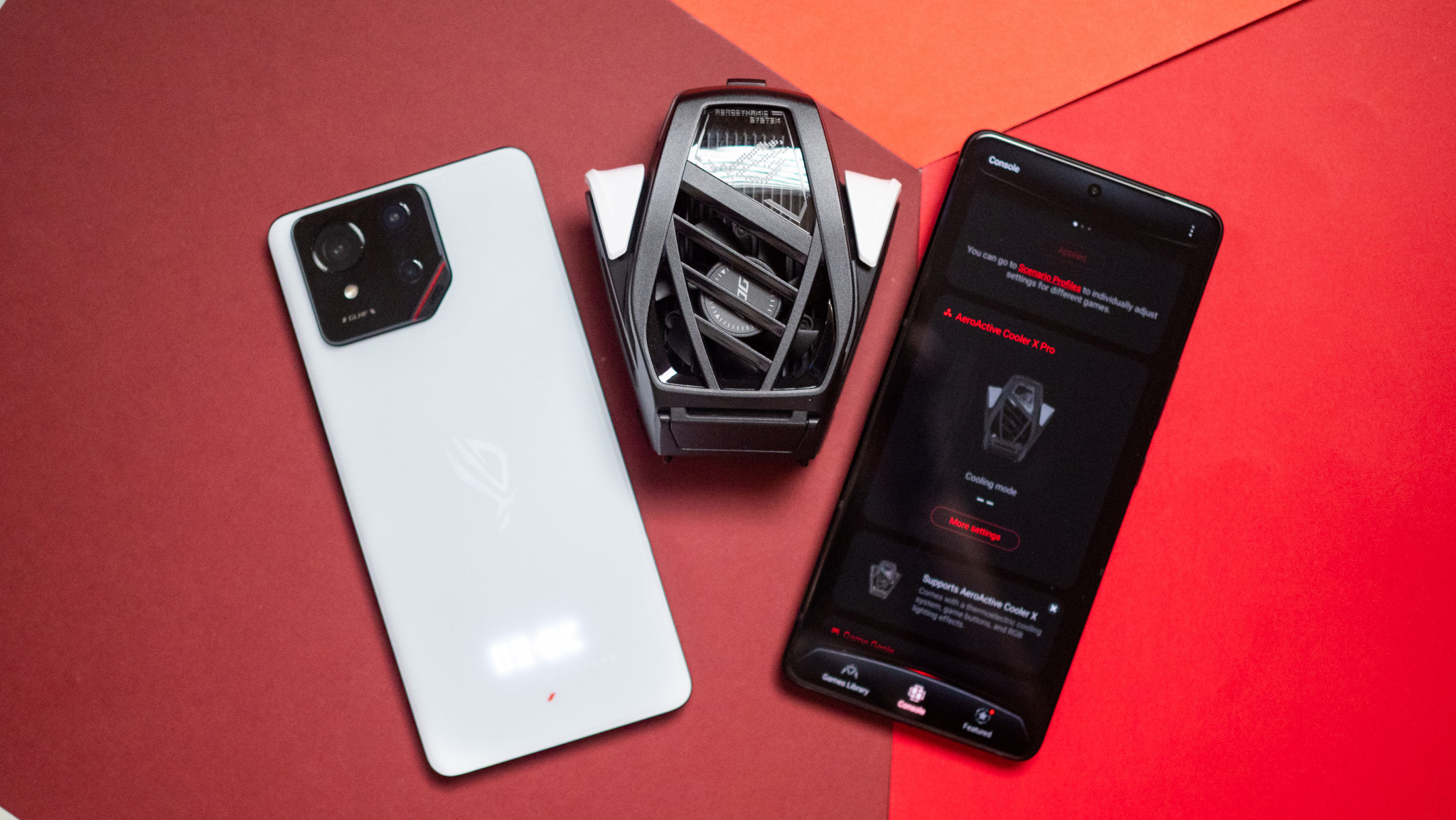
- ASUS continues to offer an extensive accessory ecosystem.
- The new AeroActive Cooler X Pro does a fantastic job with active cooling.
ASUS always rolled out exciting accessories with its gaming phones, and that's no different with the ROG Phone 9 Pro. The high-end model comes with the new AeroActive Cooler X Pro bundled in the package, and it makes a huge difference while gaming. The key difference between the Cooler X Pro and the standard Cooler X is that it now has a built-in subwoofer, delivering much better sound with a detailed low-end.
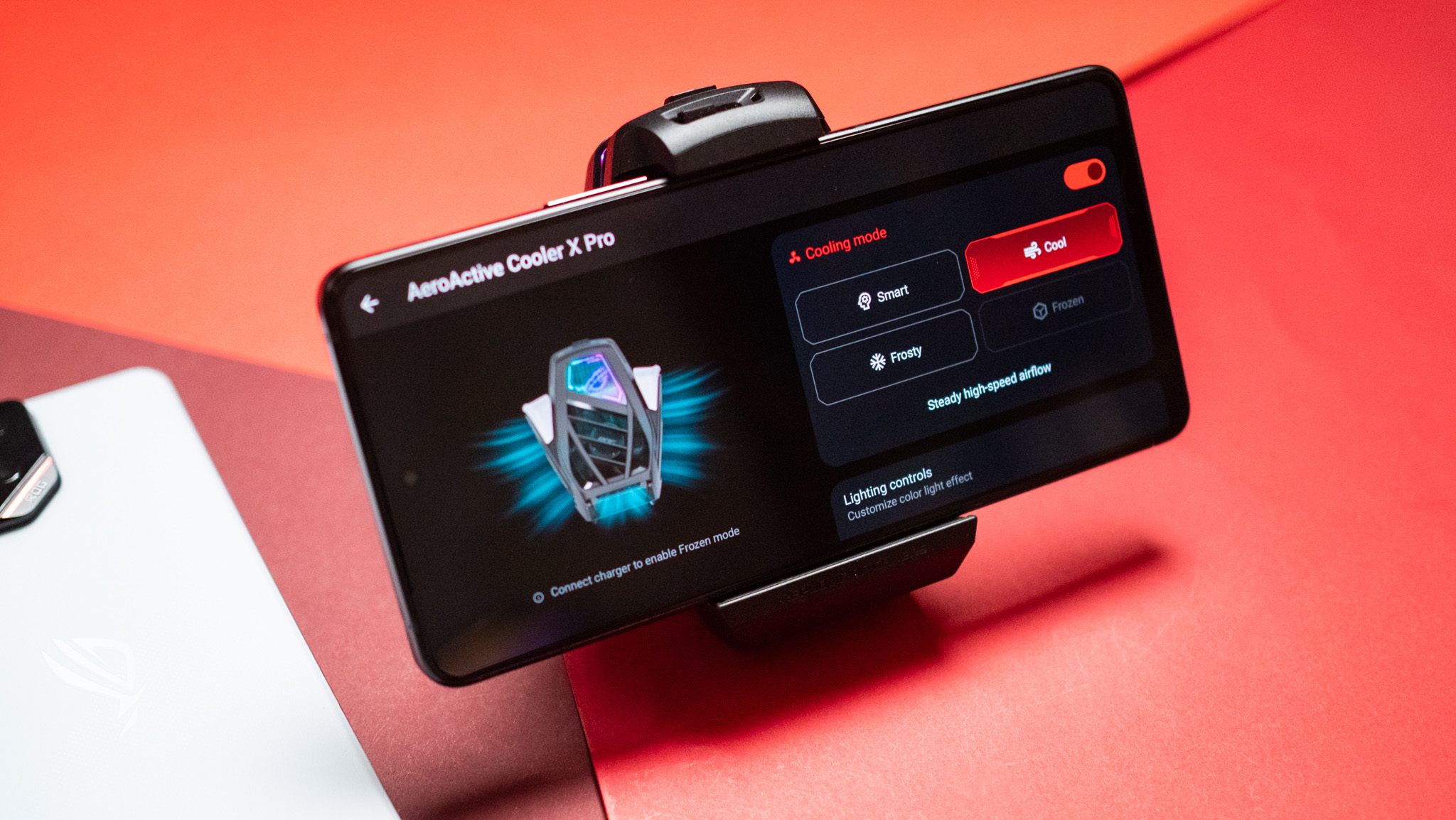
You get a 3.5mm out and USB-C port at the bottom, and there's customizable RGB lighting — obviously. There's a bigger fan this time around, and it does a great job ensuring the phone doesn't get too hot. And to round out the features, you get a kickstand as well.
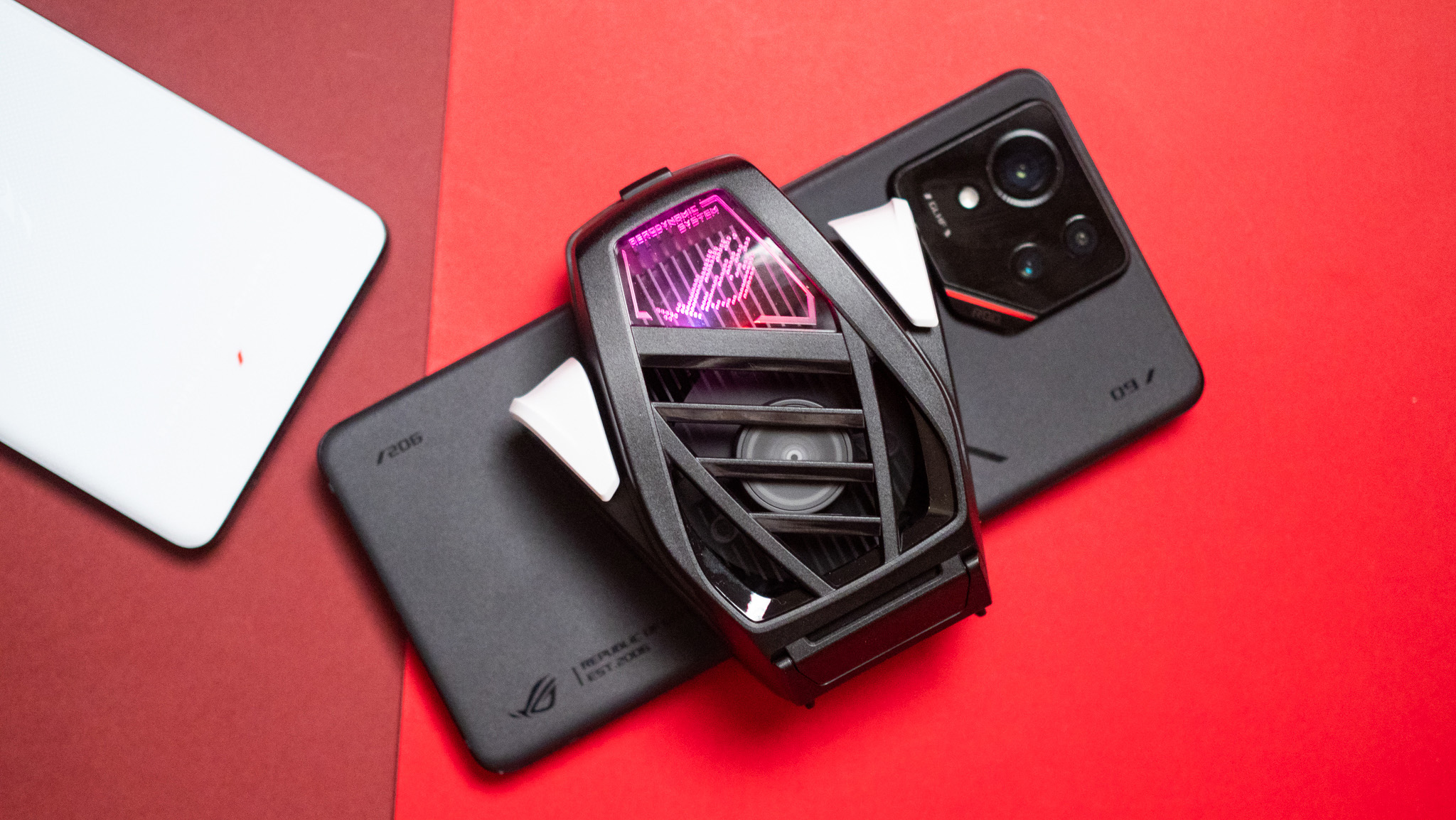
The cooler is rather bulky, but it makes a difference during extended gaming sessions, and that's when you'll actually need it. The device doesn't get anywhere as hot in regular use or short gaming bursts, and if you enable Dynamic mode, you shouldn't see any issues with thermal management.
ASUS has the Tessen mobile controller as well, and it is a regular mobile gaming controller that can be used with any phone — just like GameSir's Galileo G8 Plus. I haven't used the controller as much, but it is decent enough in its own right, and I like that it has a foldable design.
ASUS ROG Phone 9 Pro: Battery
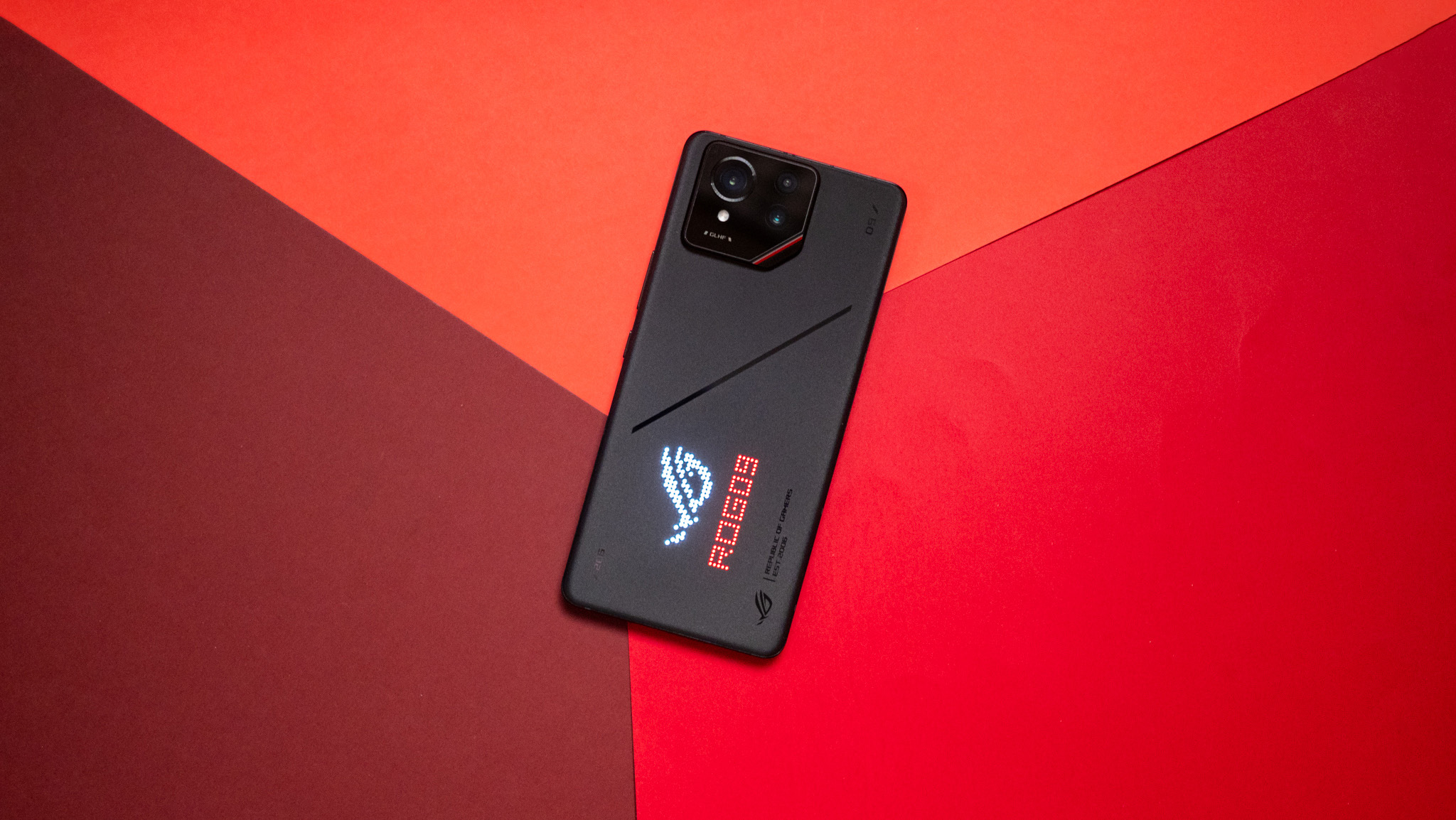
- While it doesn't have silicon-carbon tech, the battery lasts all day.
- It charges at 65W — same as previous years.
ASUS is increasing the battery size with this generation, and the ROG Phone 9 Pro comes with a 5800mAh battery — 300mAh bigger than its predecessor. You get the same 65W charging tech over the USB PD standard, and there is a charger bundled in the package with both phones.
I got over a day's worth of use consistently with the device even with heavy use, but it doesn't last a day and a half like some devices I used this year. That said, the phone is the most powerful I've used to date, so the fact that it actually lasts an entire day is a big deal in and of itself.
ASUS offers scheduled charging, steady charging — where the phone charges at a slower wattage — and charging limit as standard, and these features aren't new either. With charging limit, you can set the battery to not charge beyond 80% or 90%, extending its longevity.
While some brands are going with silicon-carbon tech in 2025, ASUS is using the traditional dual-cell system. However, you get additional features to extend battery longevity, and that makes a difference.
ASUS ROG Phone 9 Pro: Cameras
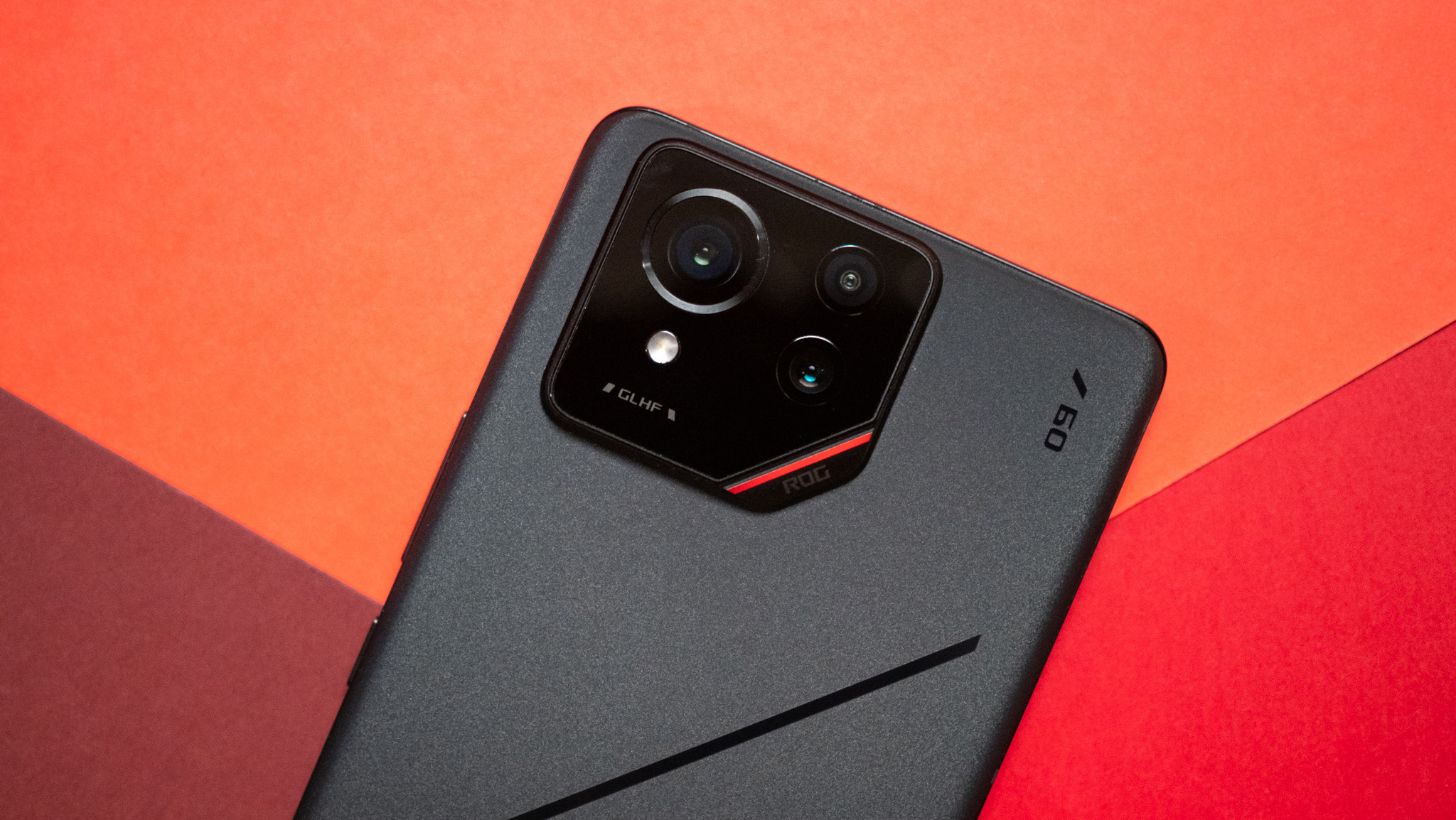
- The camera is much better this time.
- You also get a decent 3x optical zoom module.
Imaging has always been an afterthought on gaming phones, but ASUS is looking to change that narrative. The ROG Phone 9 Pro comes with an upgraded 50MP Sony Lytia 700 camera module, and it does a much better job than the IMX890 that was featured in the ROG Phone 8 Pro.
The phone gets a 32MP zoom lens with 3x optical zoom and OIS, and a 13MP wide-angle lens with autofocus. ASUS does a great job with its 6-axis gimbal stabilization tech, and when combined with the new camera sensor, there is a noticeable difference versus previous generations. A nice addition this time is Photo Vibe, which basically allows you to pick a tonal balance for your shots. There are four choices available — Gentle Cool, Vivid Cool, Soft & Warm, and Rich & Warm — and the colors change quite drastically between modes.
Physical shutter controls are cool again — mostly because of the iPhone 16 Pro Max — and while I didn't get much use out of the button, other phones are getting in on the action. ASUS is using the right-mounted AirTrigger as a shutter button, and you can use it to take photos.
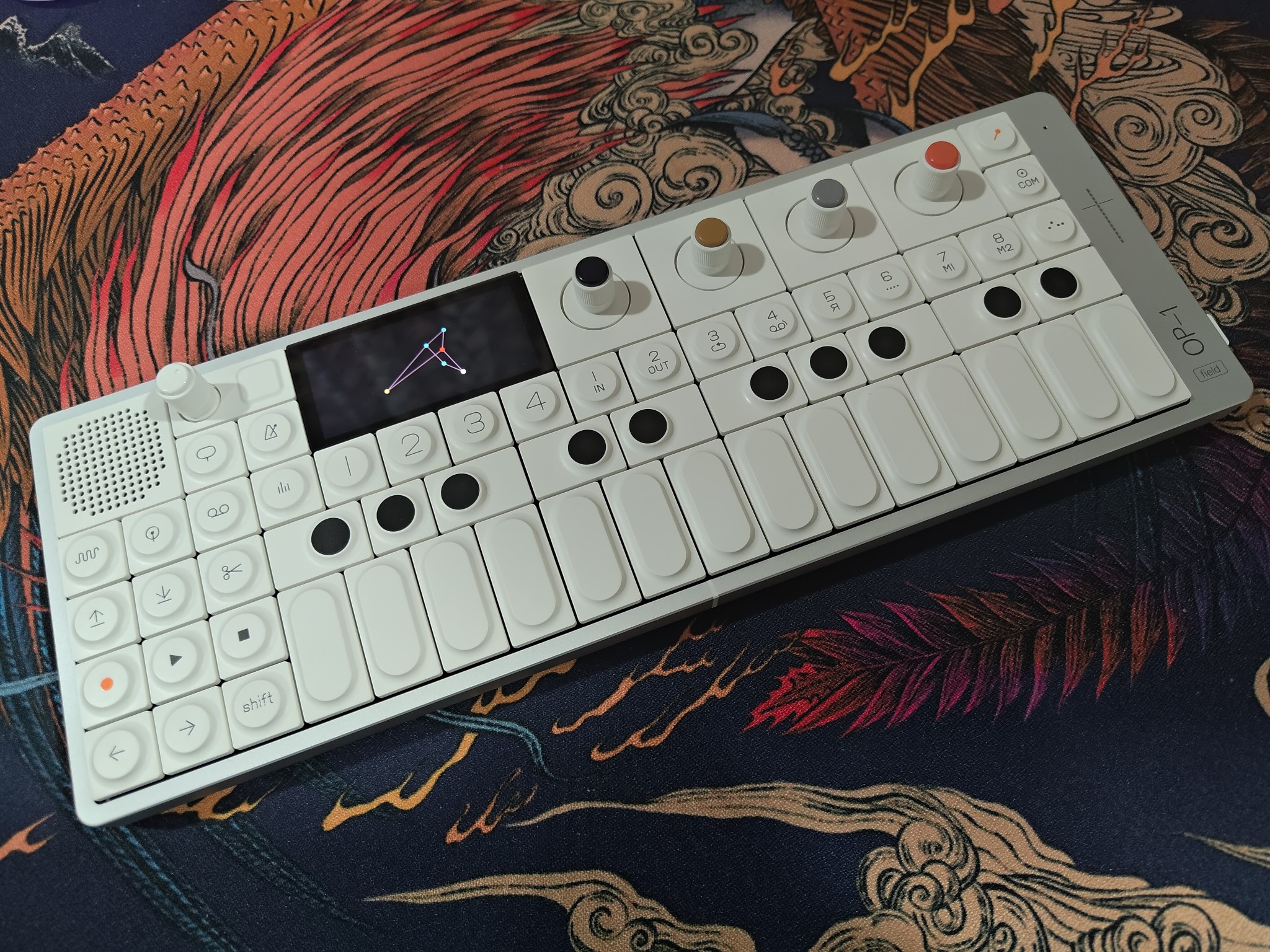
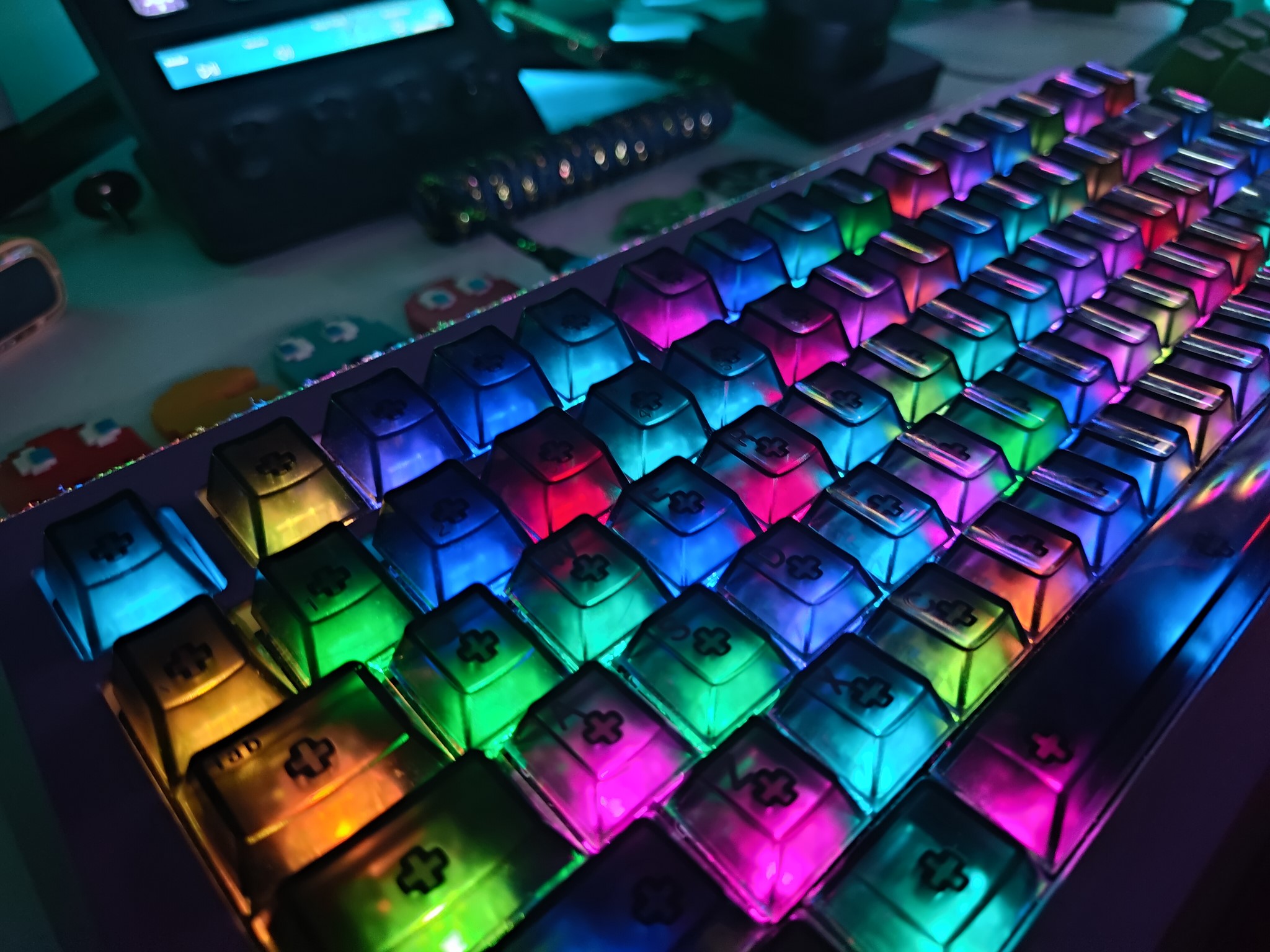
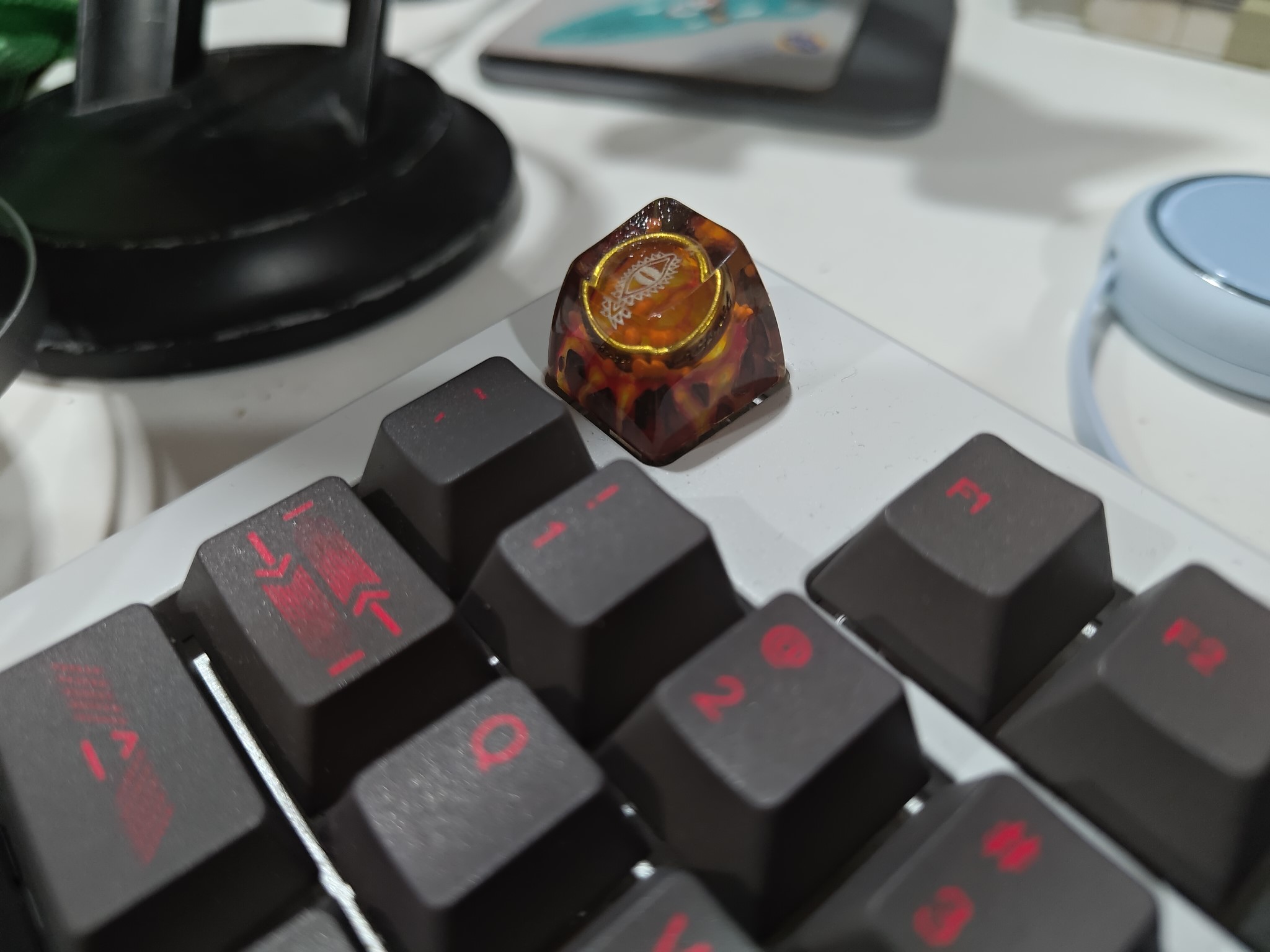
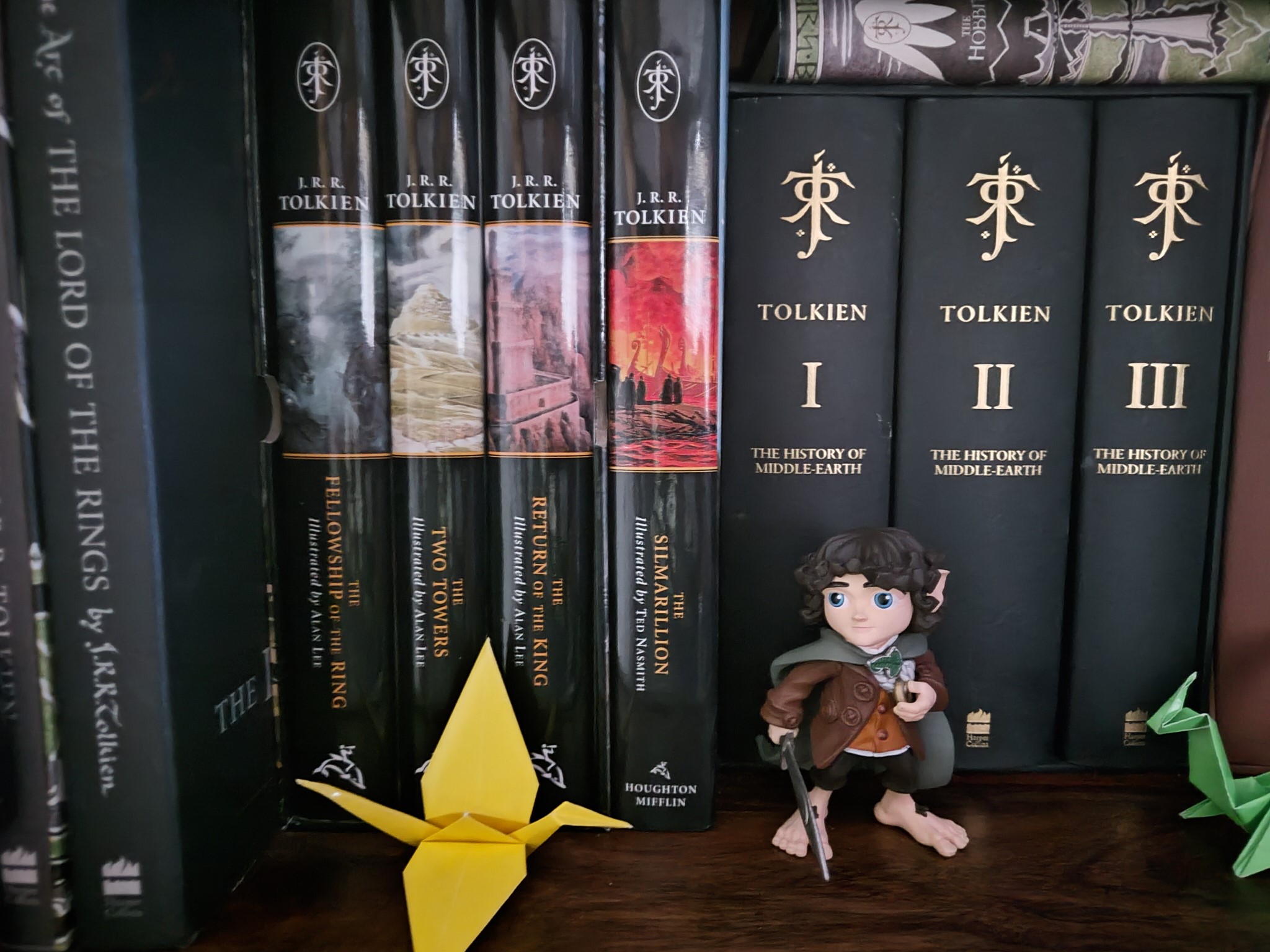
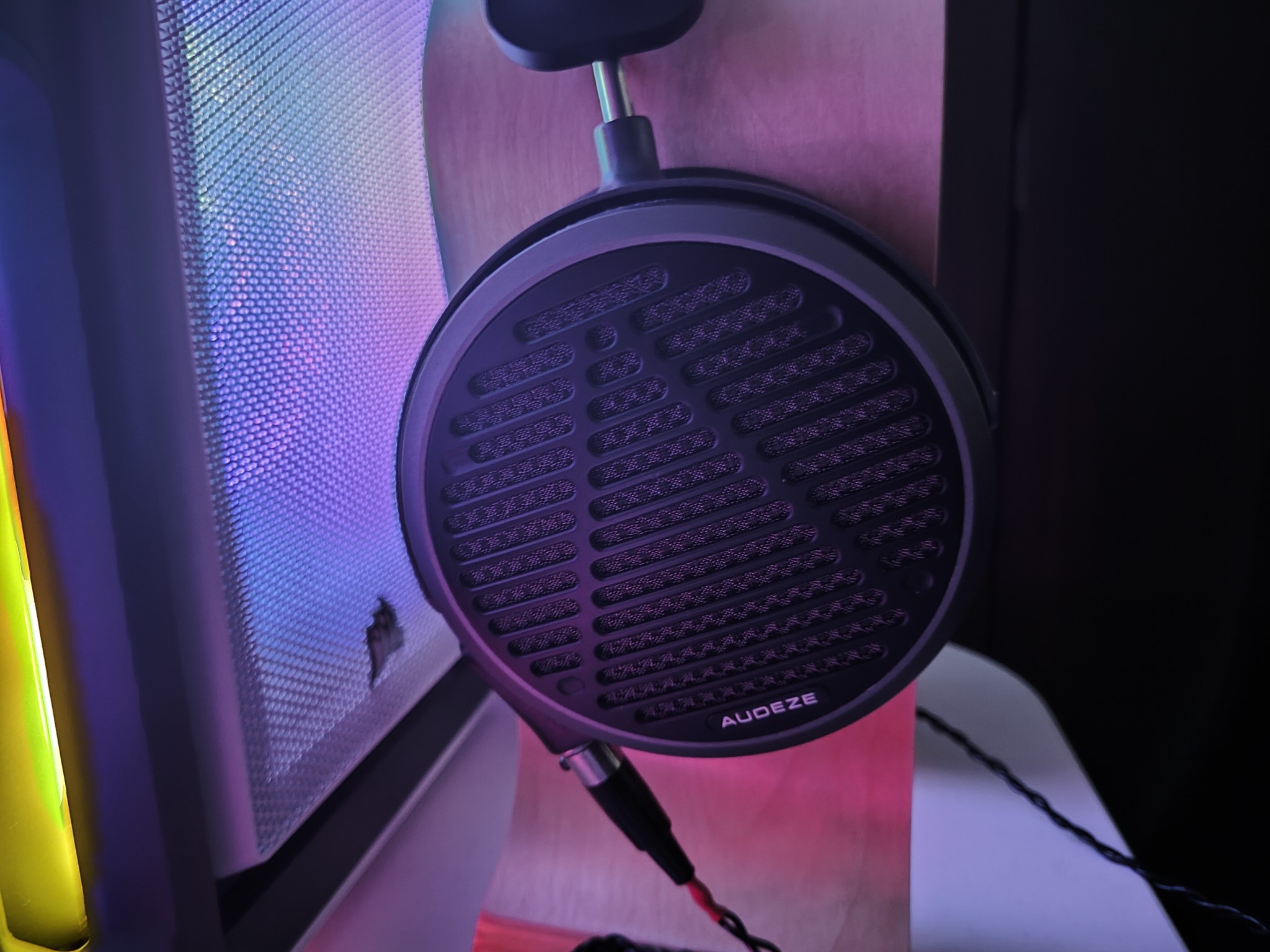





Shots taken in daylight have a good amount of detail and white balance, and there are no issues in general. The tuning algorithm tends to be a bit aggressive with smoothening details like foliage, but outside of that, you get detailed shots. Like the ROG Phone 8 Pro, the wide-angle lens is strictly average, and it doesn't quite manage to deliver the same color balance as the main lens. The issue is even more evident in low-light scenarios, and you get visible noise.
While it isn't as effortless to shoot as other flagships, you get decent shots in challenging situations out of the ROG Phone 9 Pro. The main camera is good enough this time that you don't feel constrained in this area, and there are noticeable gains over previous years.
That said, the phone is still at the same level as a mid-ranger in this regard, and it doesn't quite measure up to the camera-focused devices available today. If you see yourself taking a lot of photos, you should just wait until the Vivo X200 Pro or Find X8 launch globally, but if you just need usable cameras that deliver good enough shots, the ROG Phone 9 Pro gets the job done.
ASUS ROG Phone 9 Pro: Software
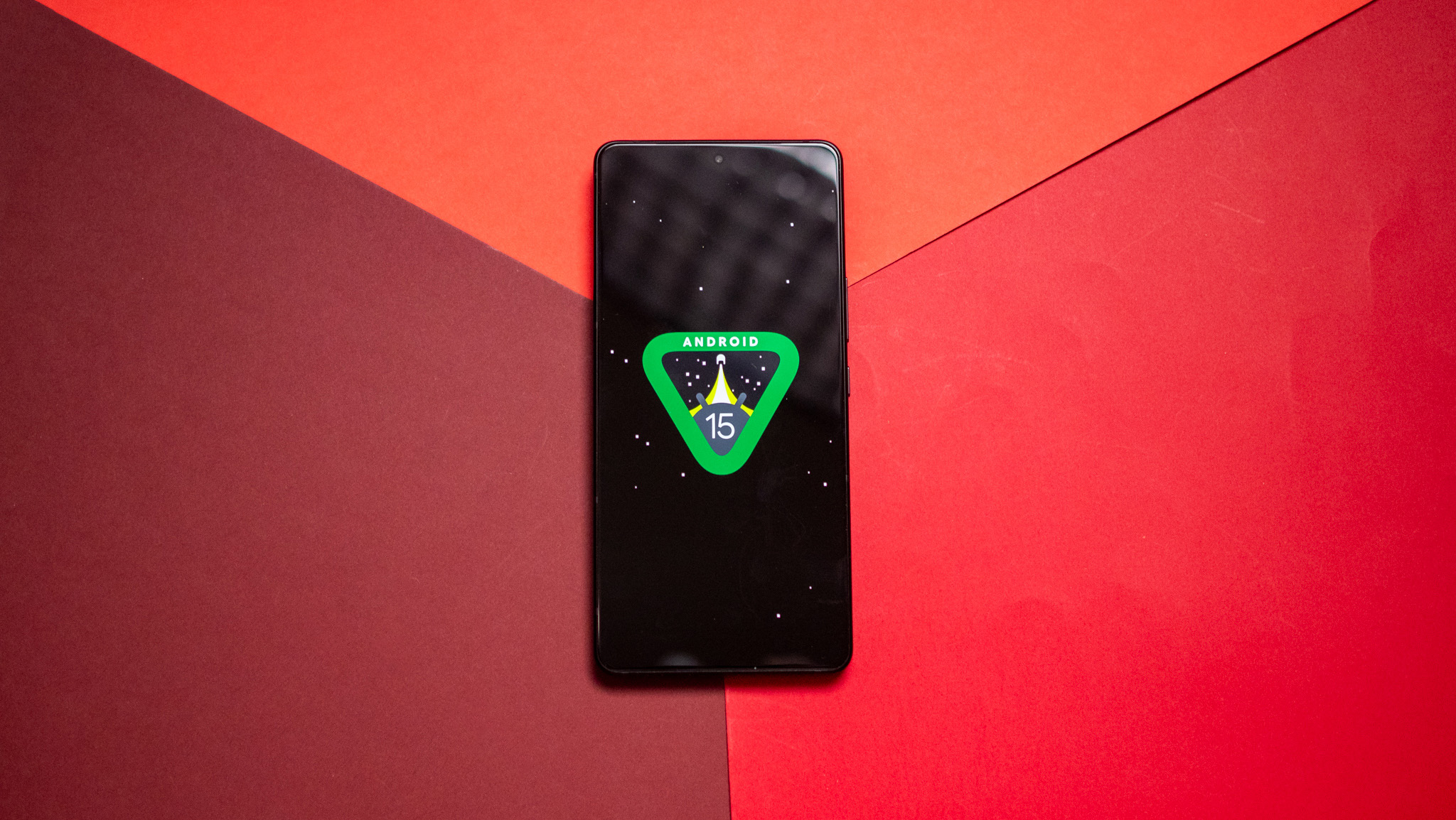
- ASUS once again manages to deliver a clean software that's fluid and doesn't have any bloatware.
- The biggest issue is that the device will get just two platform updates.
The ROG Phone 9 Pro runs Android 15 out of the box, and as is the case with every single phone, you get a suite of AI features. There's AI-assisted call translation, notes transcribing, image generation, and semantic search, and what's interesting is that they're all powered on-device — no data is sent to the cloud. The only service that relies on a signal is Circle to Search, but that's a given anyway.
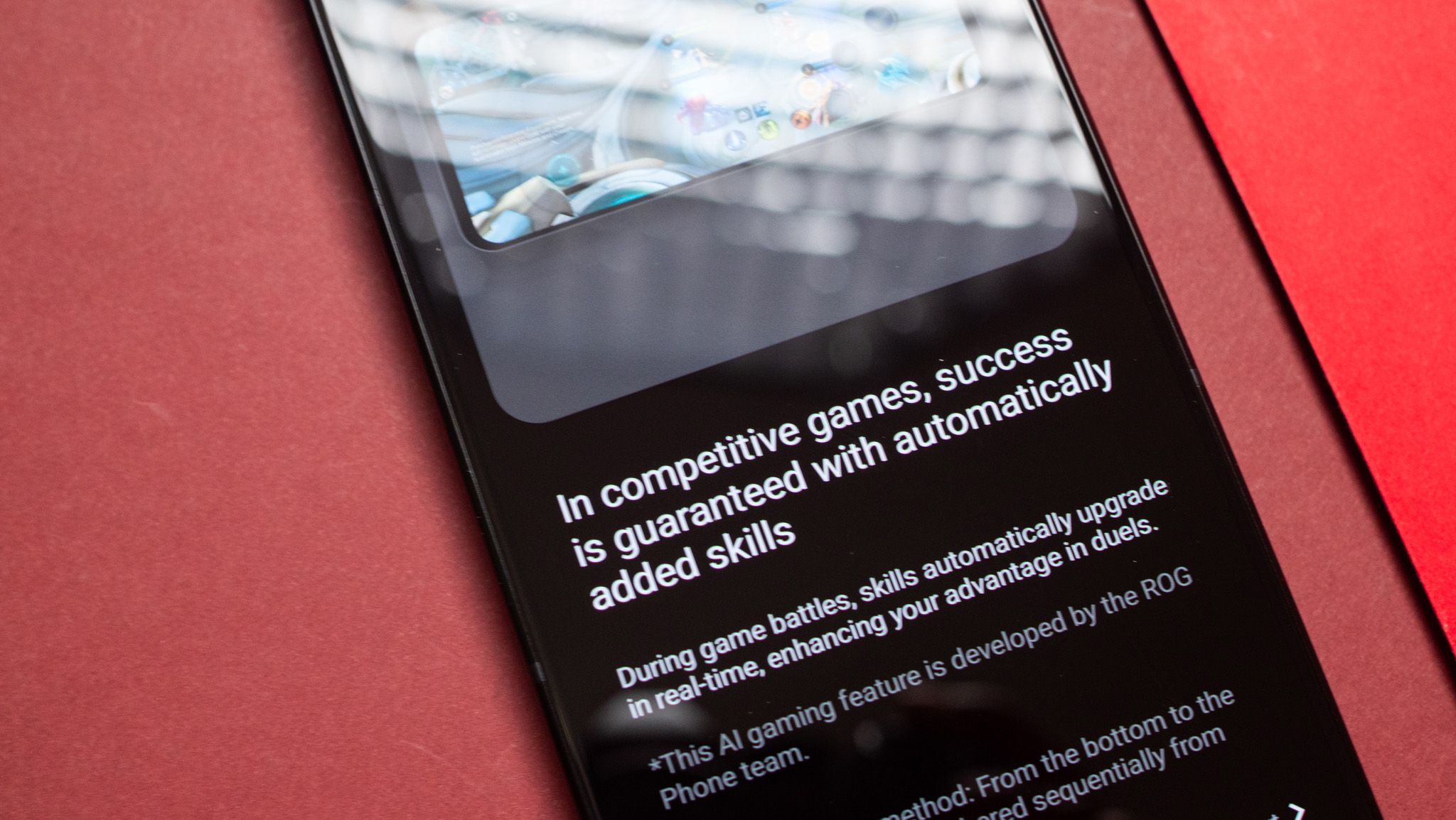
ASUS has an AI-assisted utility dubbed X Sense 3.0 that allows you to automate mundane tasks in games, including collecting loot and upgrading skills. There's AI-backed noise isolation as well, and it does a decent enough job. While not reliant on machine learning, the volume splitter option allows you to change the volume level of an individual game, so if you're multitasking or using picture-in-picture, this feature is definitely handy.
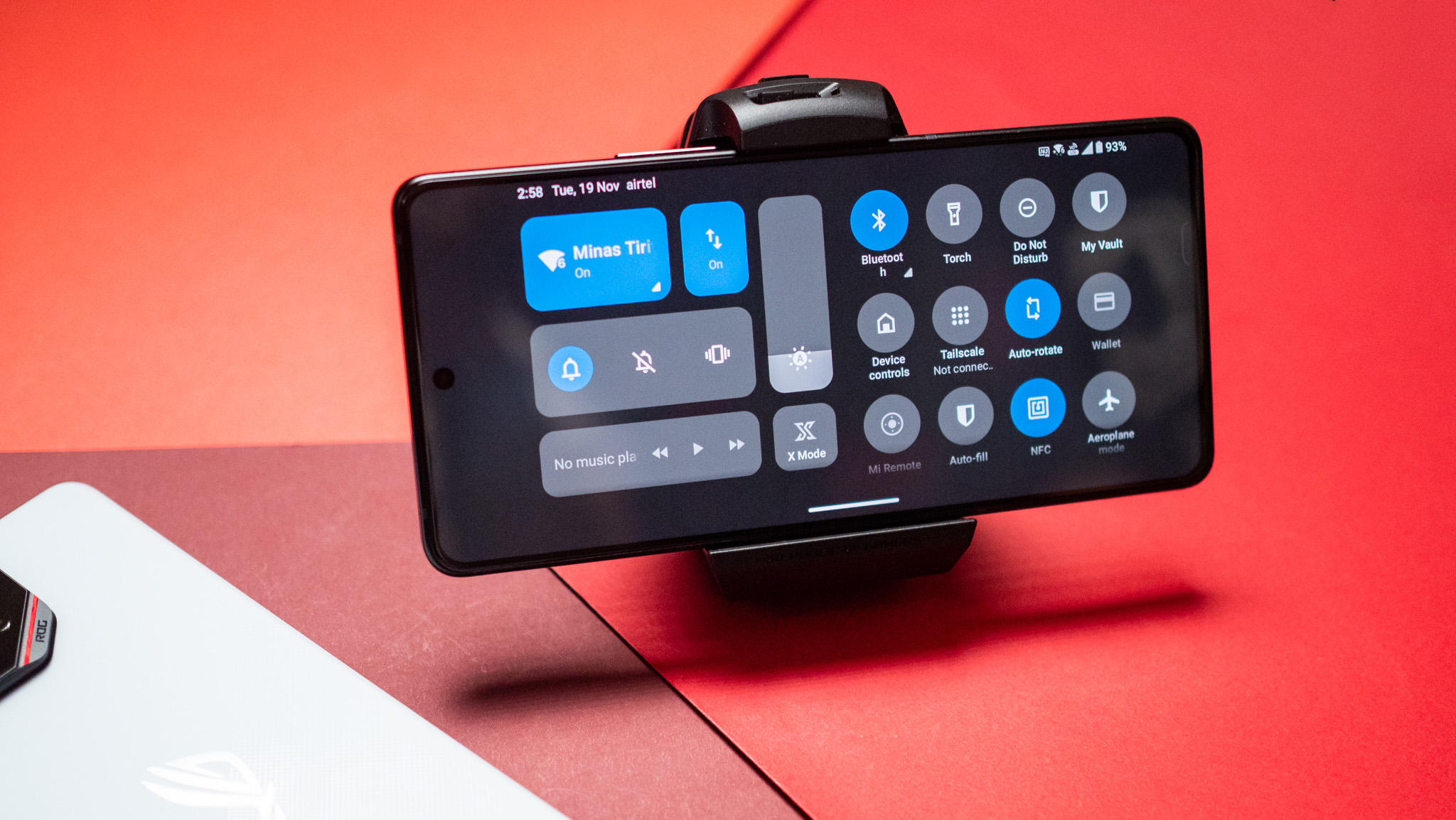
I have no issues with the software of the ROG Phone 9 Pro in daily use. The interface is as close to vanilla Android as you'll get on any device, and that alone is worthy of celebration these days. ASUS did a magnificent job (as always) tailoring the software to take advantage of the powerful hardware, and the UI is smooth on a level you just don't get with other phones.
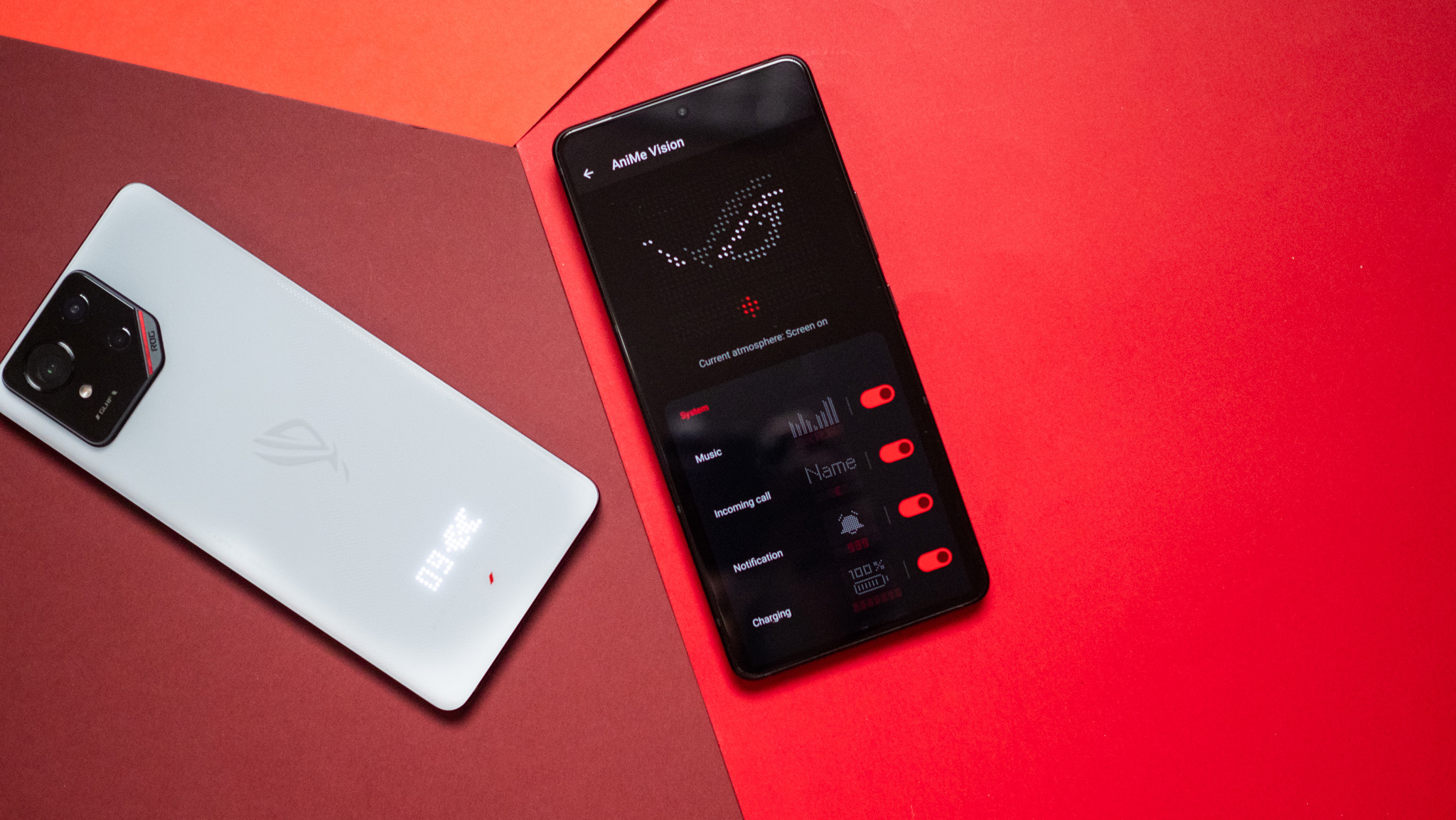
There's extensive customizability as well, and there's even a back tap gesture that lets you pull down the notification shade or toggle the flashlight without having to interact with the phone. In short, there's a lot to like about the interface itself, and it's great to see ASUS continue to offer a clean UI without any bloatware.
Software updates continue to be a point of contention, and while the ROG Phone 9 Pro will get five years of security updates, it will only pick up two platform updates. As I've said several times in these reviews, two updates just aren't adequate any longer, and with budget phones like the Nothing Phone 2a getting three updates, it doesn't make sense that a $1,499 device is limited to two Android OS updates, particularly when Google is starting to roll out these updates sooner.
ASUS ROG Phone 9 Pro: The alternatives
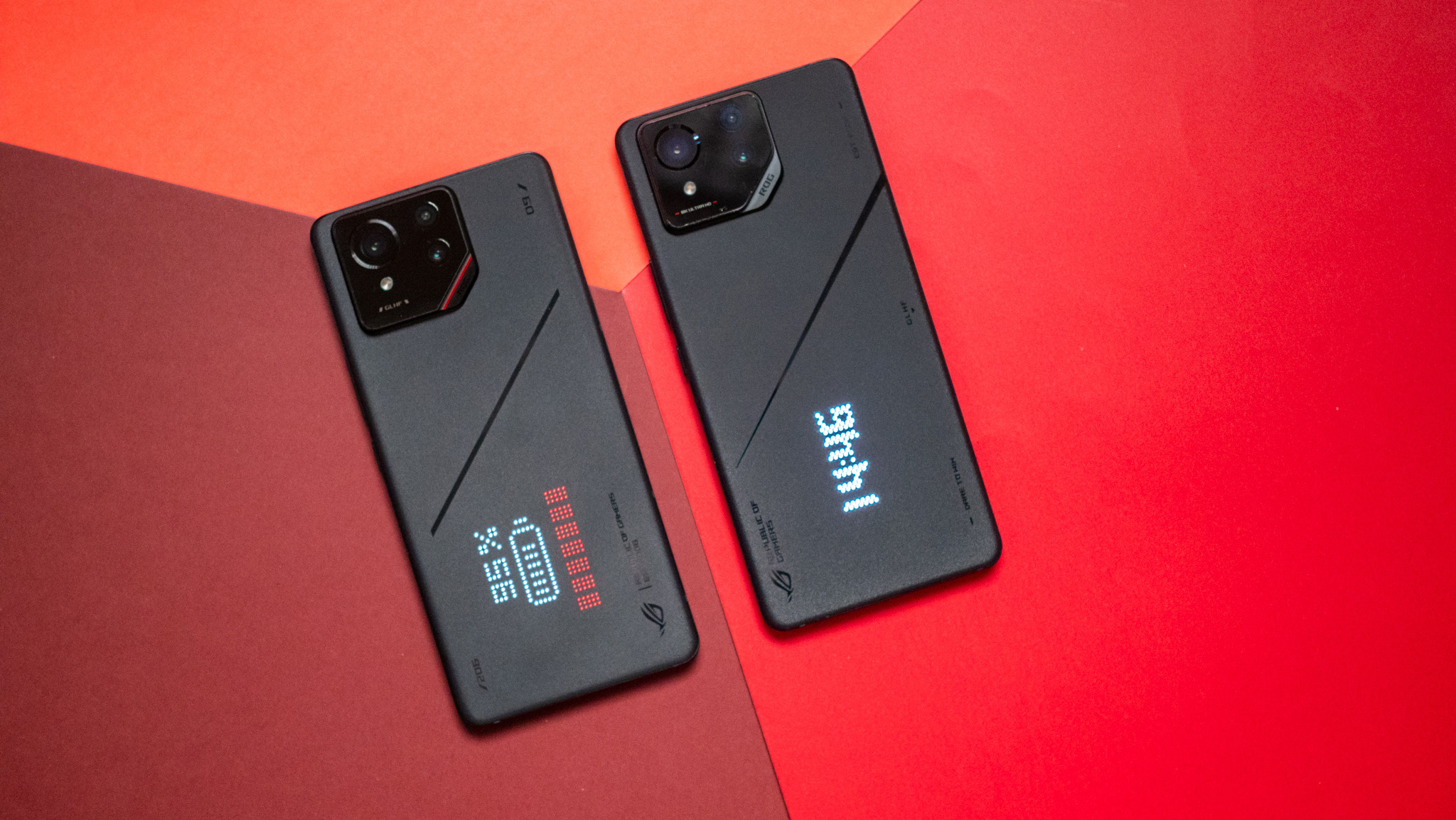
The ROG Phone 8 Pro is still a great choice, and with the introduction of the ROG Phone 9 Pro, the older device should get decent discounts. You don't get the absolute best hardware or the biggest battery, but the phone is just as performant in demanding games, and you get the same software.
If you need better cameras, the OnePlus 12 is a good alternative as well. The phone takes better shots, and you still get powerful hardware that's great for gaming. The software isn't anywhere as good though, and the interface has overt styling. The upside is that the device is much more affordable.
ASUS ROG Phone 9 Pro: Should you buy it?
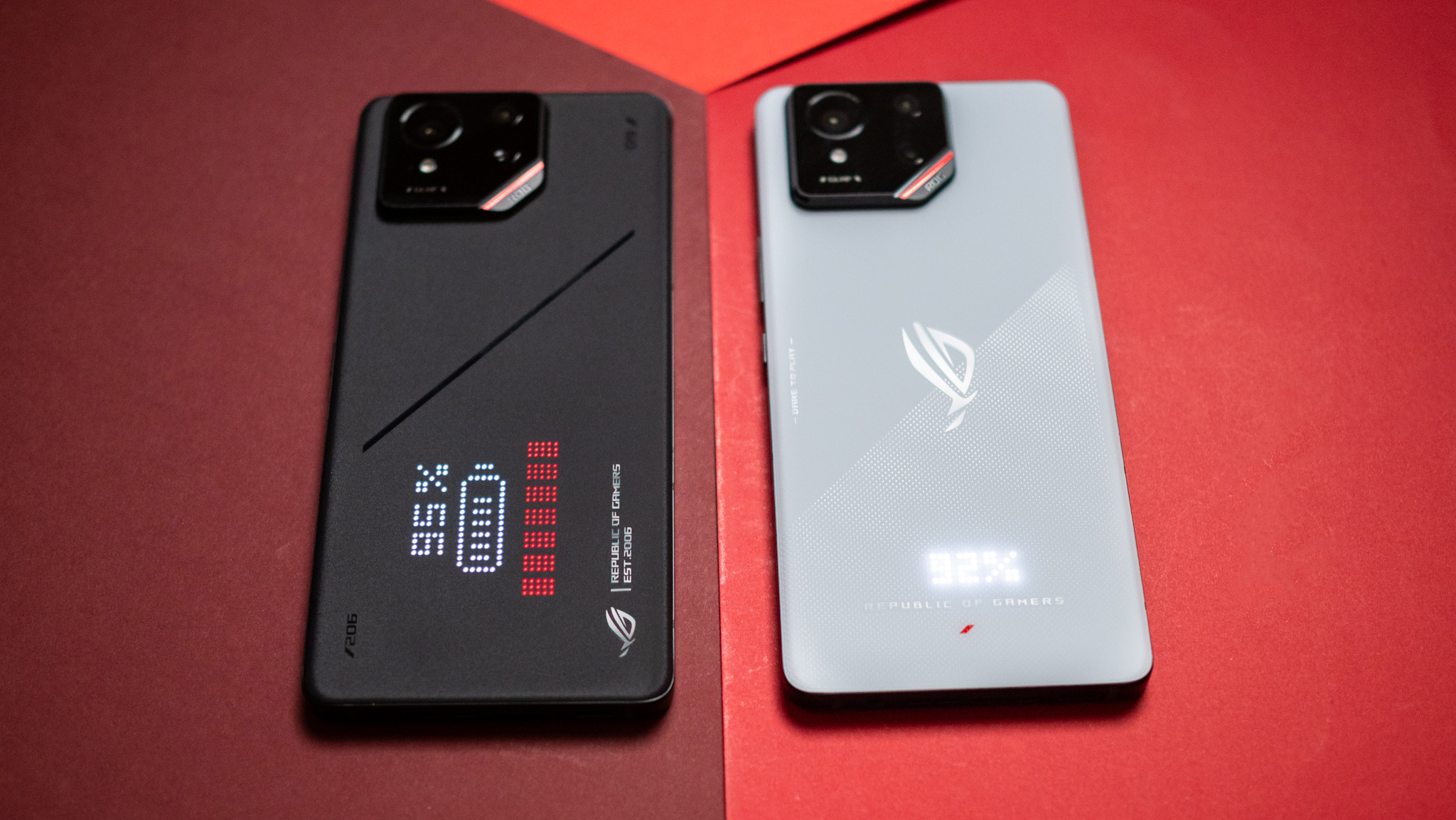
You should buy this if:
- You want the best gaming phone money can buy
- You need meaningful software extras and a clean UI
- You want a fluidic interface with 165Hz refresh
- You need great battery life
- You want a 3.5mm jack
You shouldn't buy this if:
- You need a phone that'll get long-term software updates
- You want great cameras
ASUS continues to be the best at optimizing the software, and the ROG Phone 9 Pro is fluid like no other device I used recently. Of course, the 165Hz panel also makes a difference in this regard, as does the upgraded Qualcomm hardware. The new 50MP camera at the back is great too, and while it won't challenge the Vivo X200 Ultra or Find X8 Ultra, it is much better than its predecessors, and that's a notable achievement.
I like what ASUS does with the software as well; the interface itself is clean and doesn't have any bloatware, and the brand knows what it's doing on the optimization front, so you get a fluidic UI. You don't miss out on anything either — the phone has a 3.5mm jack, IP68 ingress protection, reliable 65W charging over USB PD and 15W wireless charging, and a terrific 165Hz AMOLED panel.
In short, this is one of the best hardware and software packages you can get today, and if you're interested in mobile gaming, there really isn't a better device. Even if you don't play many games on your phone, the ROG Phone 9 Pro has a lot going for it, and the changes to the cameras makes it an all-rounder. However, like previous years, the fact that you just get two Android OS updates continues to be a deal-breaker, and ASUS really needs to do better.
There are better phones in the market, but if you need the one with the best performance, the ROG Phone 9 Pro is the one to get — if you don't mind the middling update guarantee.

The ROG Phone 9 Pro has all the ingredients of a great gaming phone. It has the best internals of any device, a vibrant AMOLED panel, standout battery, and clean software.







